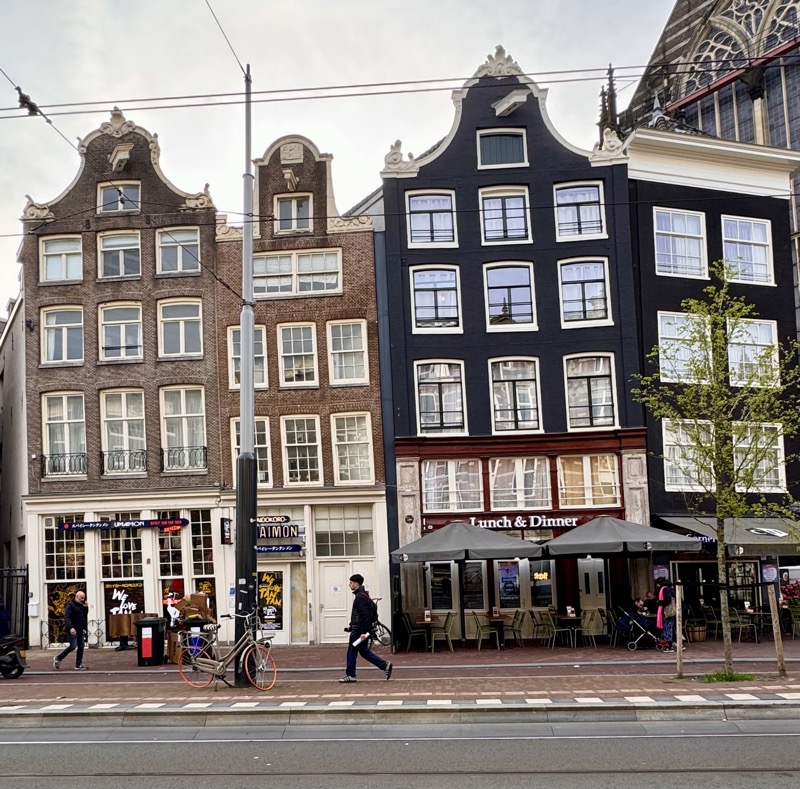
This image is hurting my head, almost as much as it was hurting my head while I was standing across from it and noticing how some of the brickwork is decidedly ‘triangular’ as in small fractions of bricks at the bottom to wider full bricks at the top, built to accomodate for the fact that the building next door isn’t straight! Wedges of brickworks for crooked little houses in crooked little streets!
Wonky architecture aside, Amsterdam has heaps to recommend it (even if you’re not here for the Red Light District or the cannabis coffee shops), and OMG, I have died and gone to cheese heaven! There are so many cheeses shops everywhere.
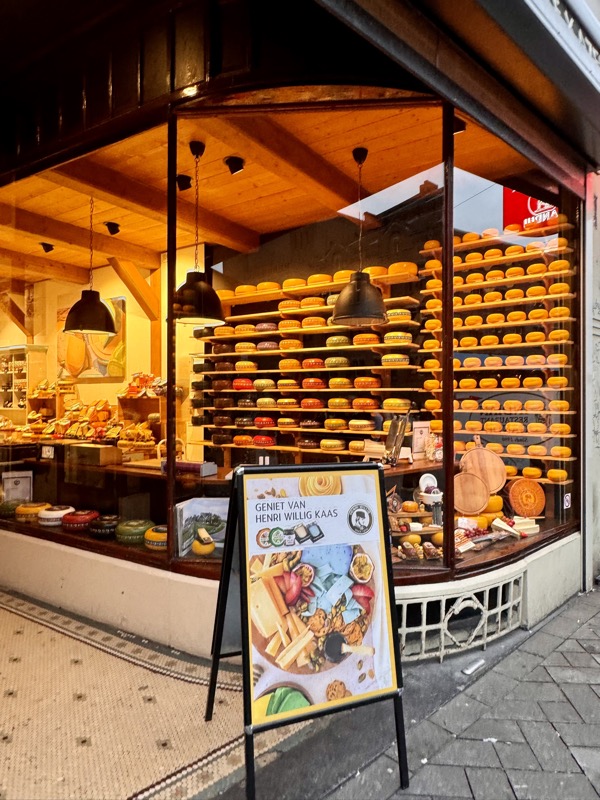
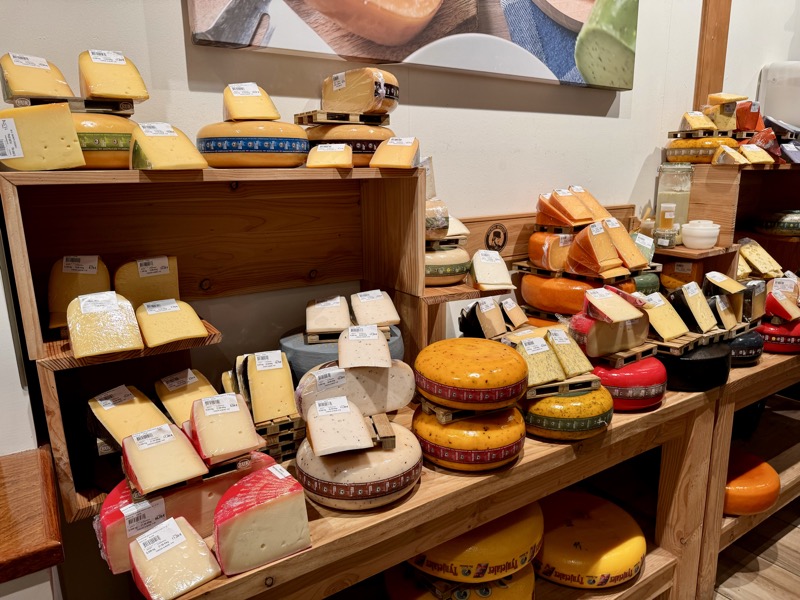
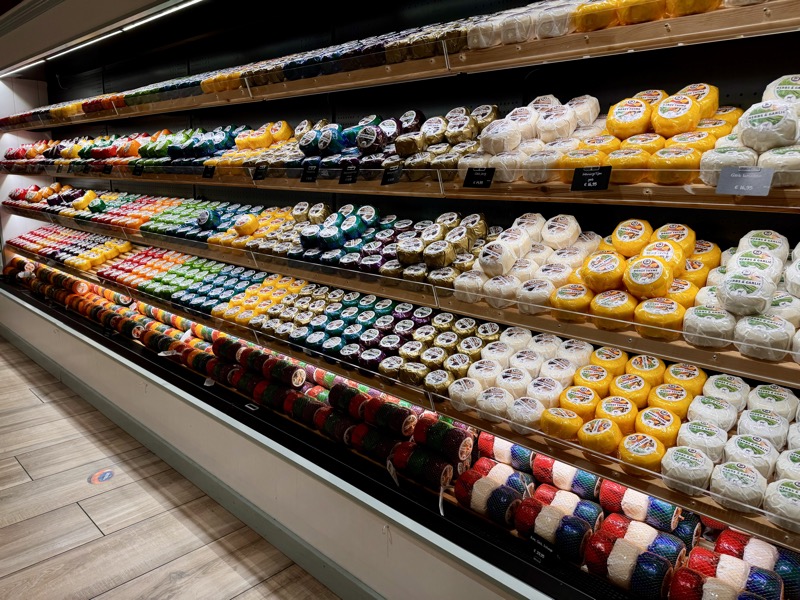
So much cheese! So little refrigeration space in our hotel minibar fridge! :/ Next time Gromit!
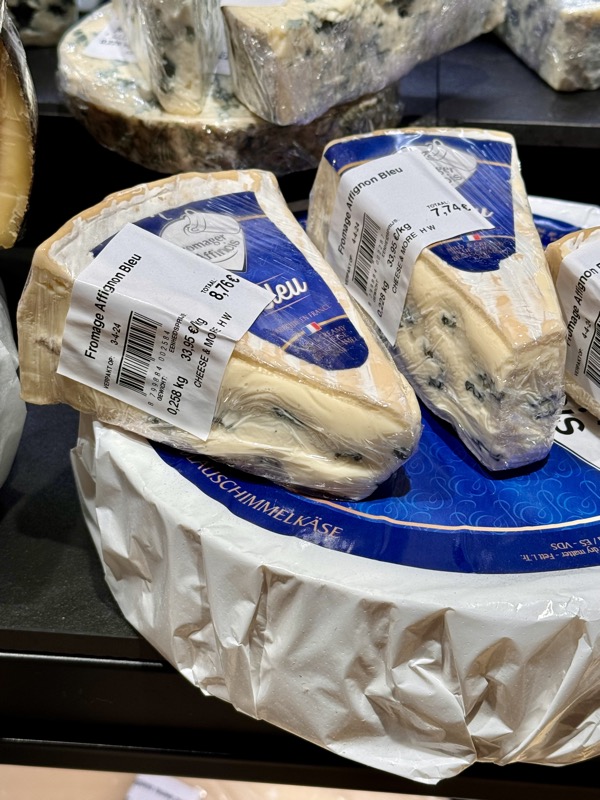
We have some early work to do, but Mr K got out bright and early to get a jump on the day (yeah… nothing to do with jet lag and being wide awake at stupid o’clock), so he decided to take a walk and find some transit cards that we could use on the trams to get to meetings and later to the museums we wanted to see. The city was so still and beautiful before everyone was getting on with their day.
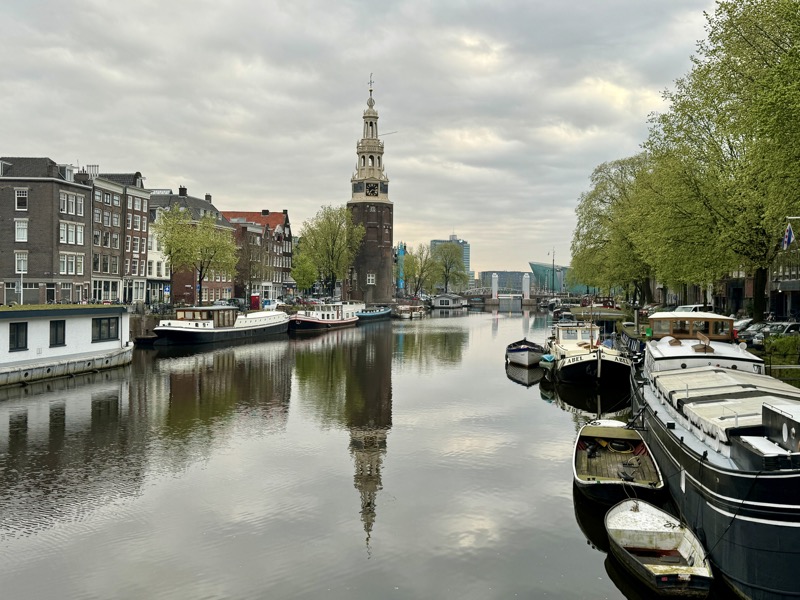
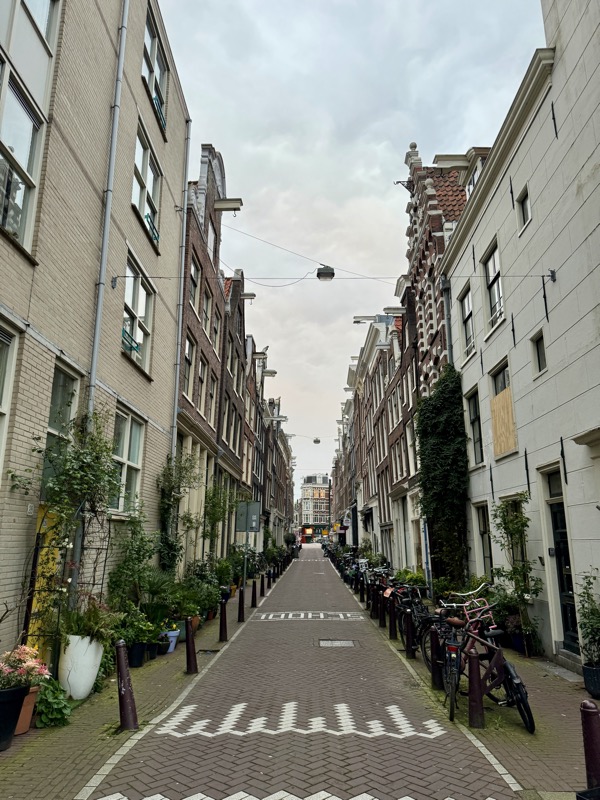
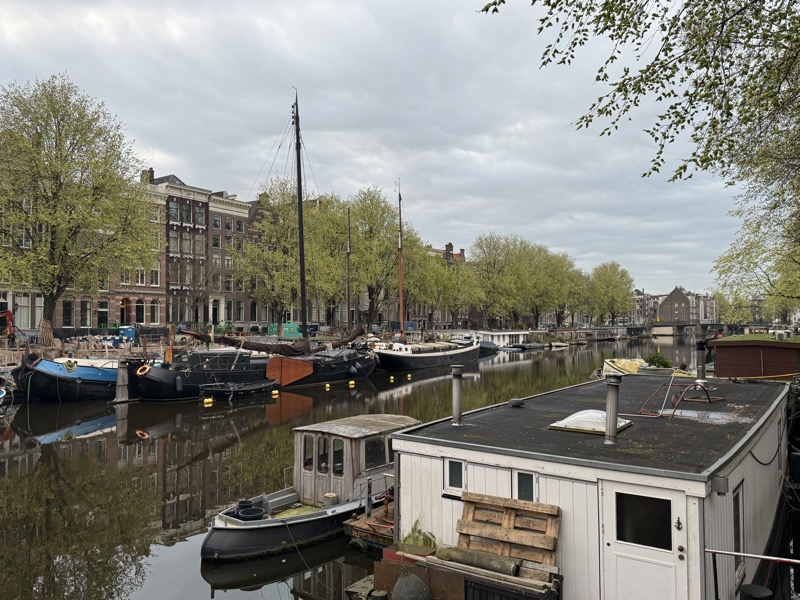
Except tram drivers, they seem to have to start earlier than everyone else… god bless public transport.
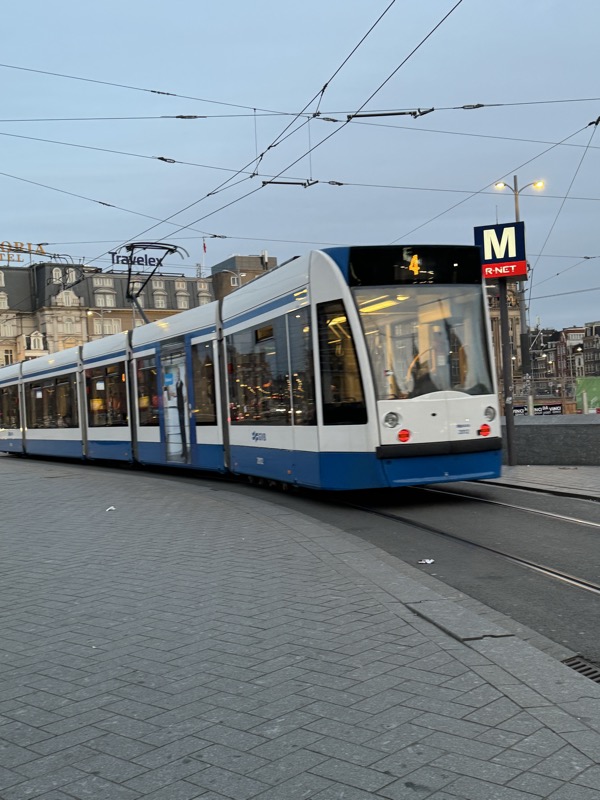
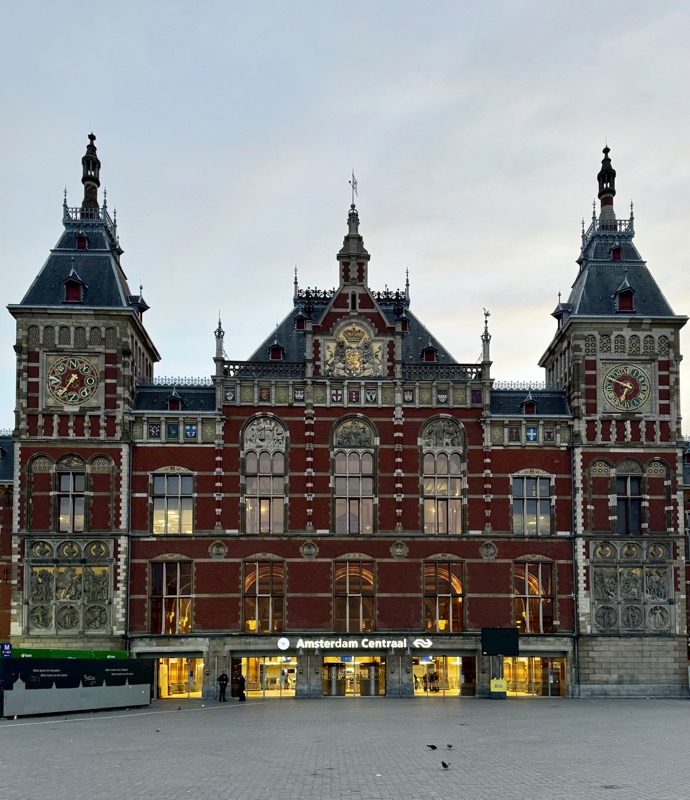
The Amsterdam Central train station had the transit cards we were looking for – but as of April 22, 2024 (in approx 14 days time) they will no longer be available. Everyone is being encouraged to either have an app on their mobile device that can be topped up, or to use cash vending machines to print out a ticket that contains a QR code that you scan as you get on and off public transport. And why is this innovation being pushed, like literally everywhere? Well, for one, it’s cheaper they don’t have to make physical cards, and two, the app system tracks and gathers way more data that these dumb cards can. *scowly face* Good for those in the industry not so great for consumer.
They probably could have made them way cheaper by ditching the fancy hologram in the first instance!
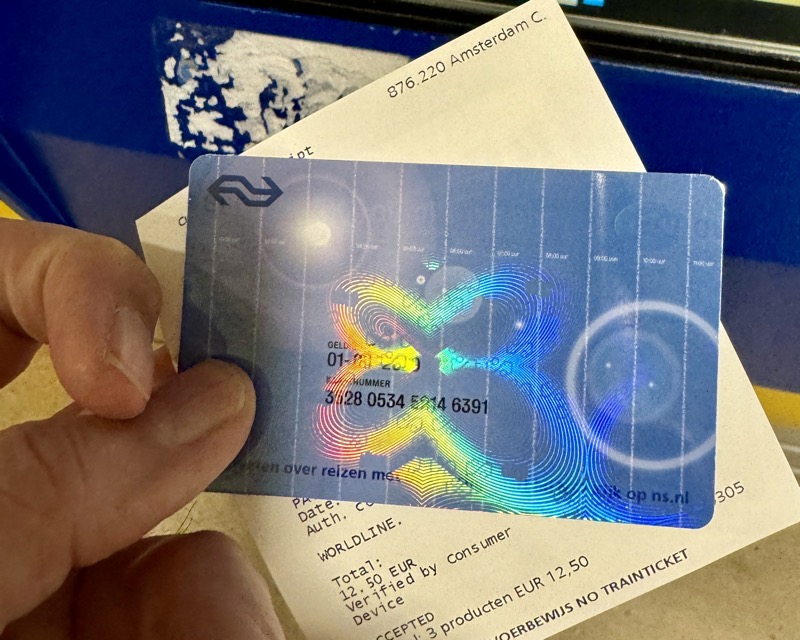
Reflections on the canal… gorgeous.
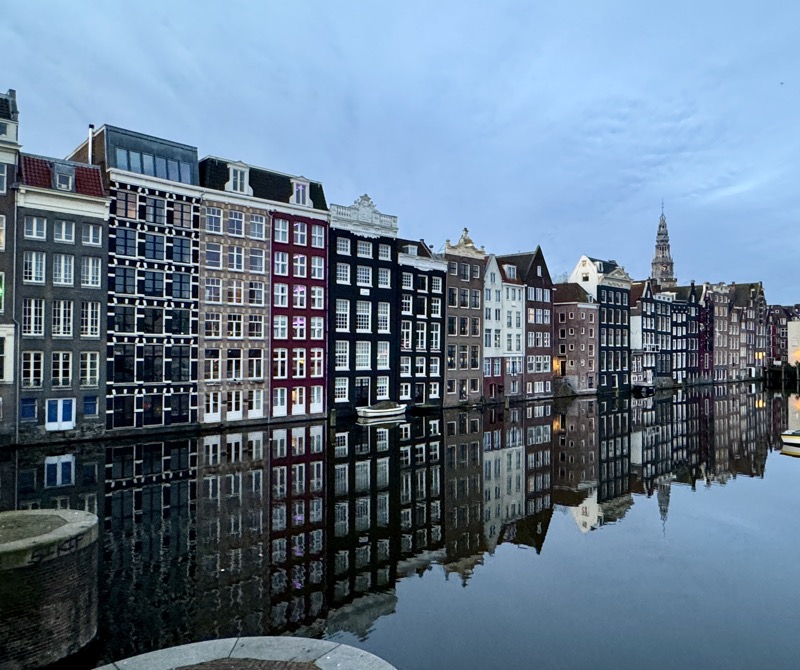
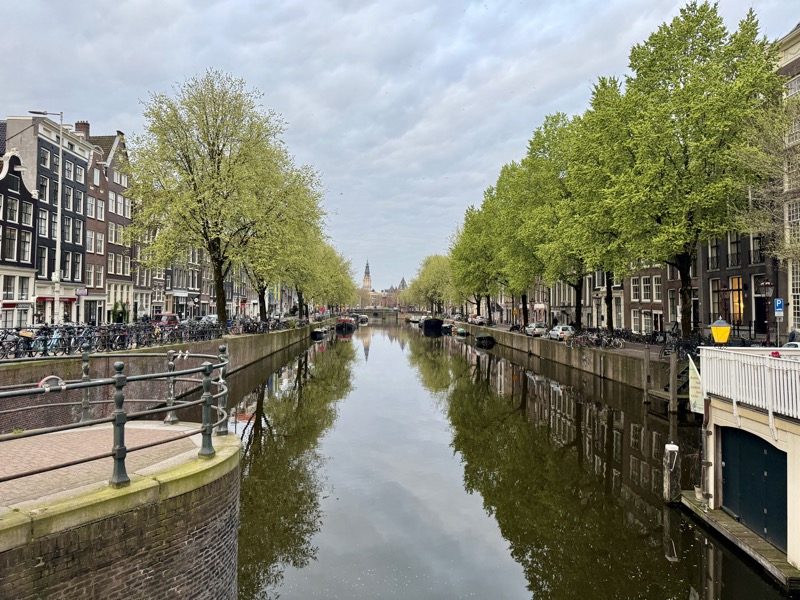
Anyway, after the meetings were done this morning, we ended up at the Van Gogh Museum. And by ‘ended up’, I mean, we made it in time to use the timed entry tickets I had pre-purchased weeks ago – which was just as well, as there were signs everywhere saying the entire day’s visitor allocation was SOLD OUT. So heads up travellers! Pre-purchasing is a must even on the shoulder season these days. The building itself is quite impressive – though a bit of a nightmare if you can’t walk the stairs (the lifts are small and cramped and slooow).
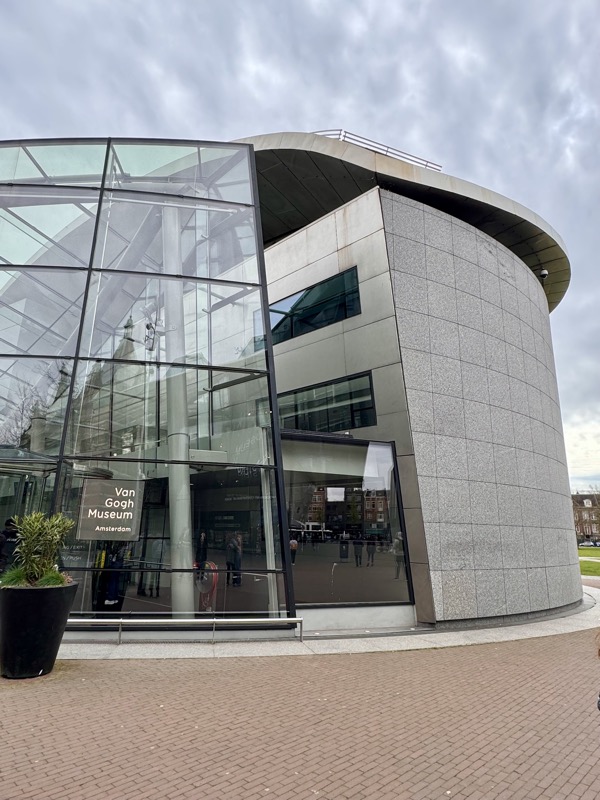
I took a bunch of photos that I want to include here, but I’m not going to rave on about most of them – if you’re unfamiliar with Vincent Van Gogh’s work and his particular genius in the impressionist movement, you need way more help than I’m gonna give here!
Mostly I was trying to capture the texture, and interplay of light and colour that Van Gogh’s works are famous for; which rarely translates well when the works are reproduced in prints or photographs. Which you know, if the professionals can’t manage – I’m highly unlikely to manage it today… but you know, everybody needs a hobby, or in this case a distraction when you’re musuem’ing it in chronic pain. 😀
’Wheatfield With Crows’, c.1890… there’s something menacing but still lovely about this one.
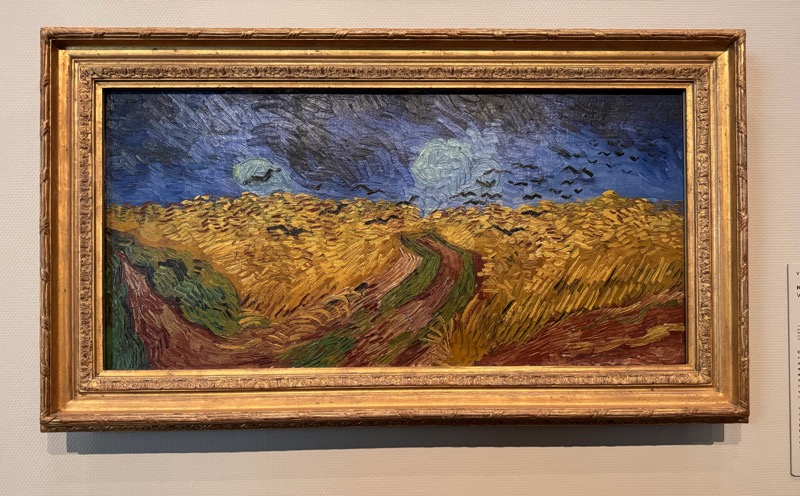
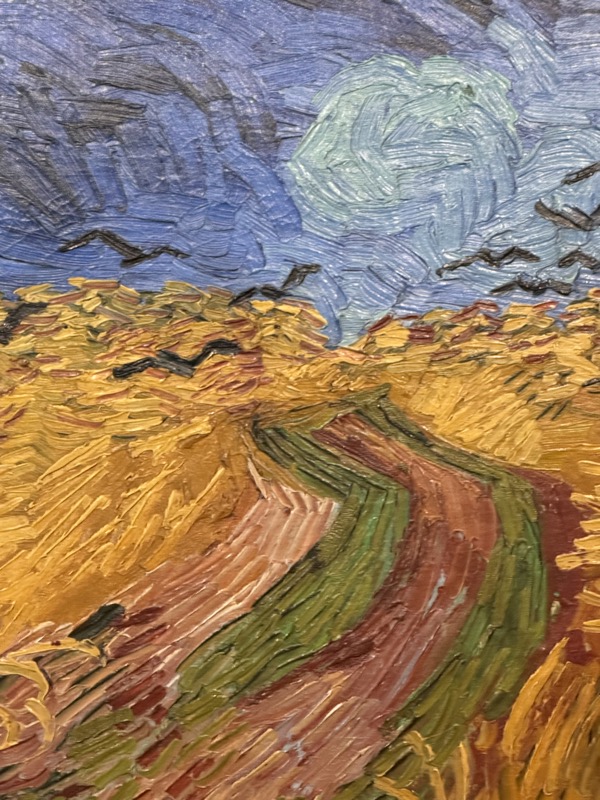
‘Wheatfields Under Thunder Clouds’, c.1890.
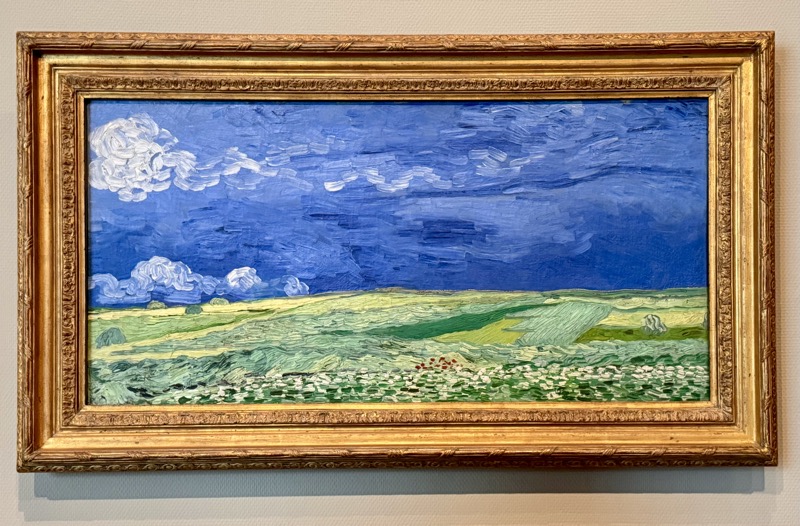
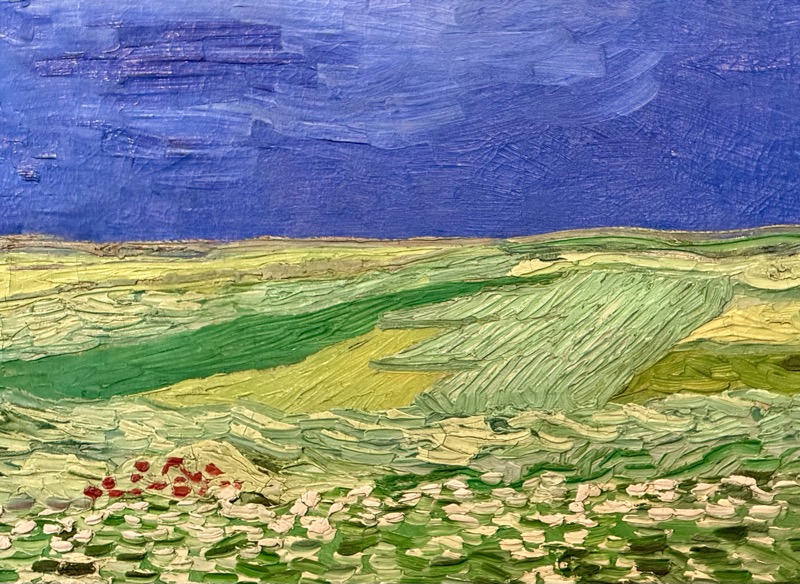
‘A Pair of Leather clogs’, c. 1888.
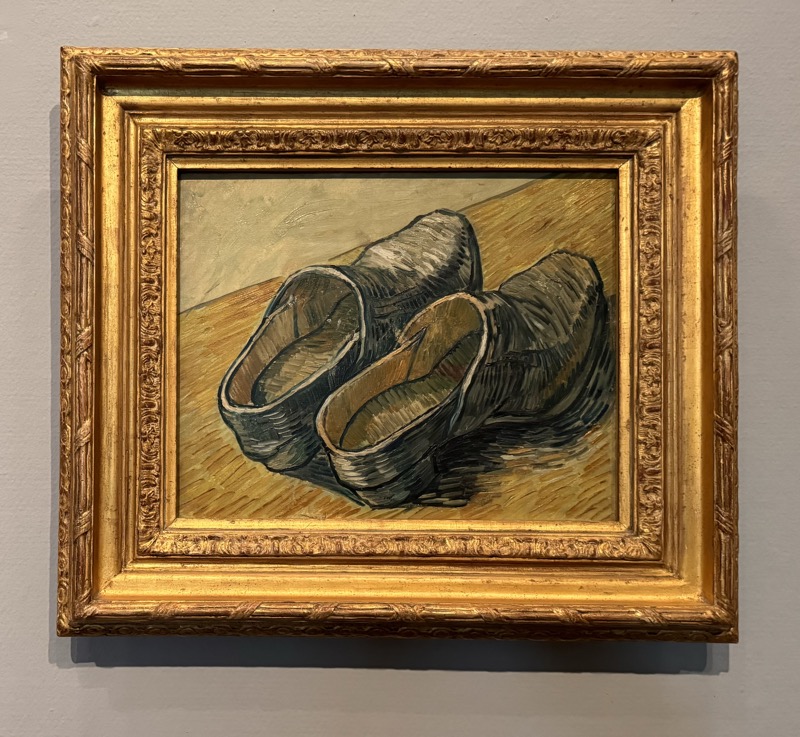
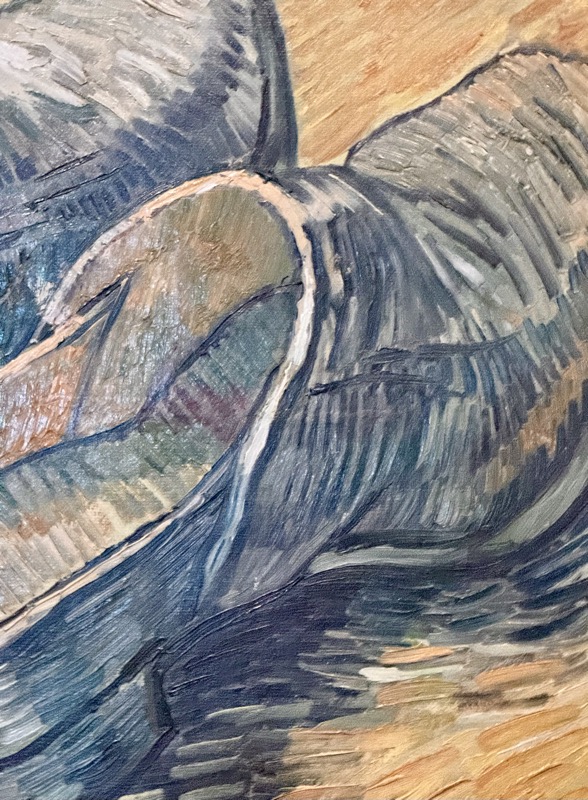
‘Irises’, c.1890. Painted in while he was living in the St Remy psychiatric hospital, the Irises paintings were primarily a study in colour – they were originally bright purple on a yellow background, but the paint has faded with time.
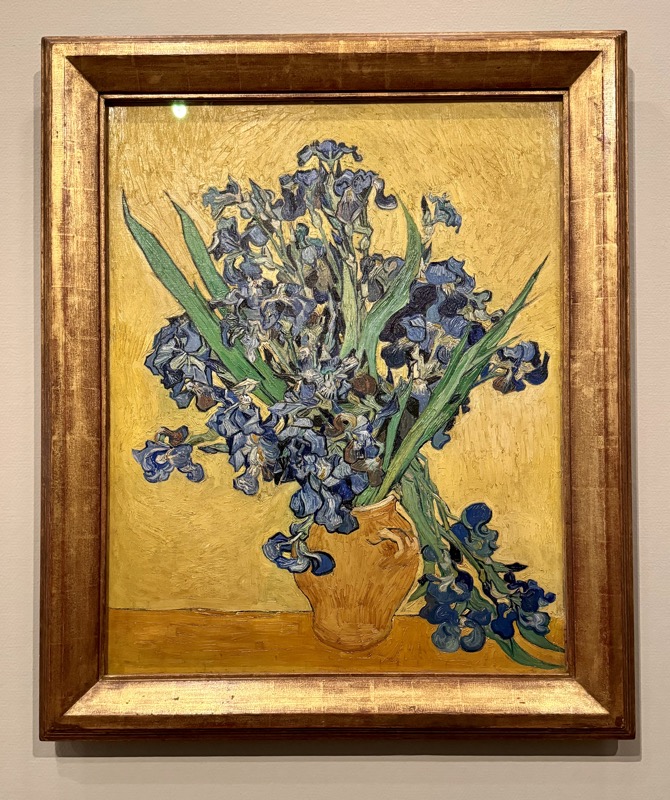
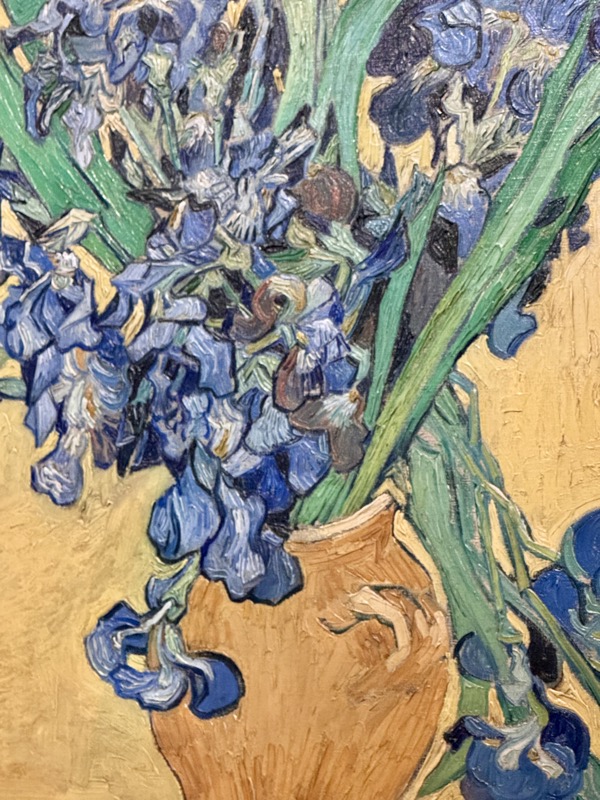
Like I said, beautiful museum, but all the galleries revolved around these spiralling staircases. Accessibility fail.
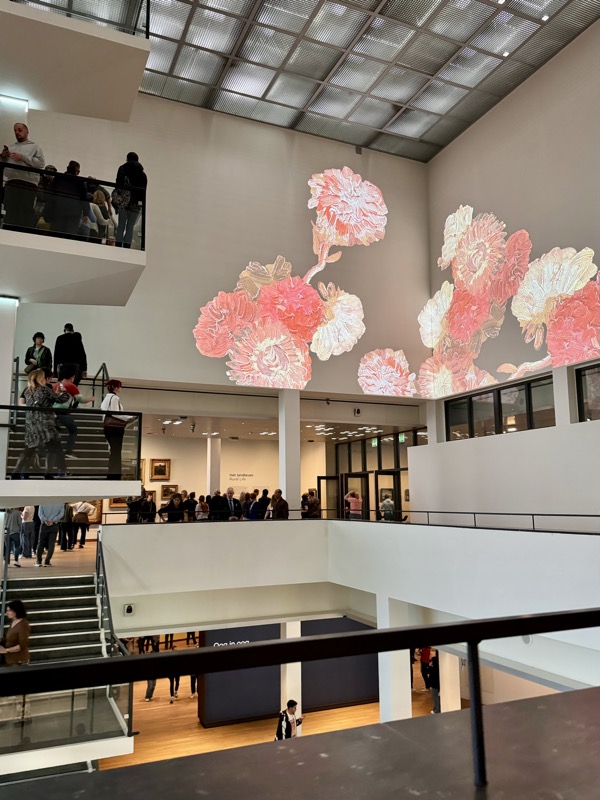
Van Gogh painted this very famous ‘Almond Blossom’ (c.1890) painting just after his brother, Theo, had a son who he had promised to name Vincent, after him. Upon receiving word that the son was born, and named Vincent, he reportedly became completely absorbed with painting this almond blossom against a blue sky and took to his work for days on end. He wrote to Theo: ‘the last canvas of the branches in blossom, you’ll see that is was perhaps the most patiently worked, best thing I have done, painted with calm and a greater sureness of touch’. The painting became one of Theo’s most treasured possessions and their son, Vincent Jnr, later founded this museum. Which was a cute personal story that accompanied the artwork. There was also a bunch of twonk about the delicate flowering buds heralding the spring and new life, and the birth of a child bringing hope and yada, yada, yada…
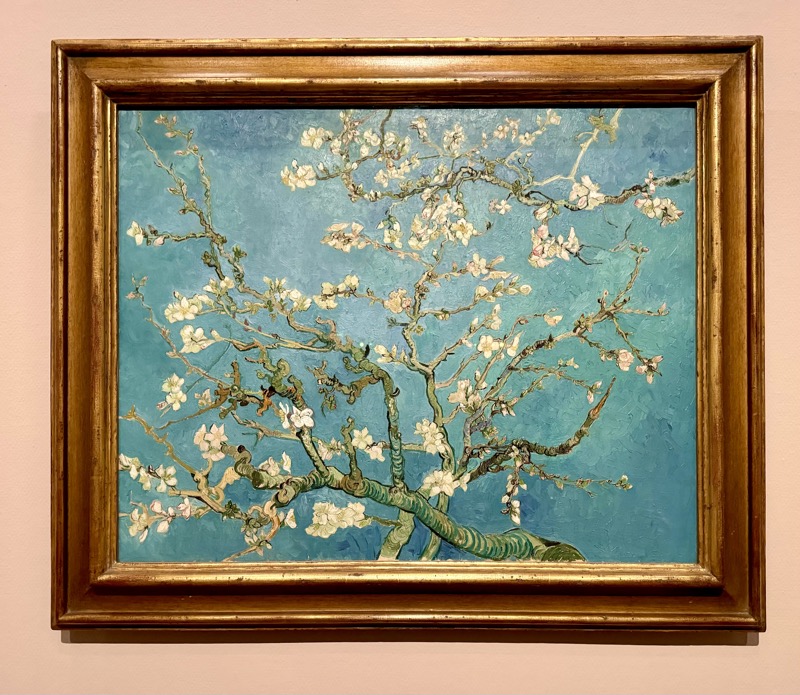
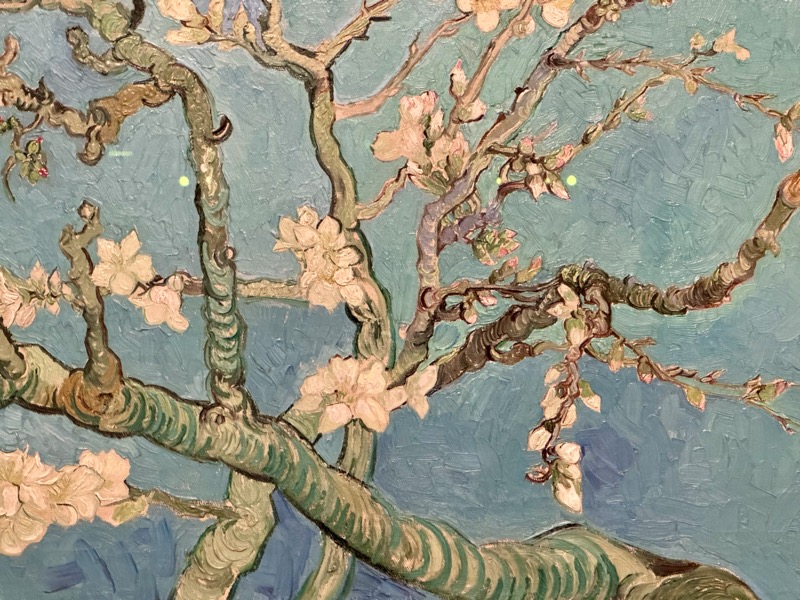
This was an interestingly curated piece – ‘Landscape with Rabbits’, c.1889…
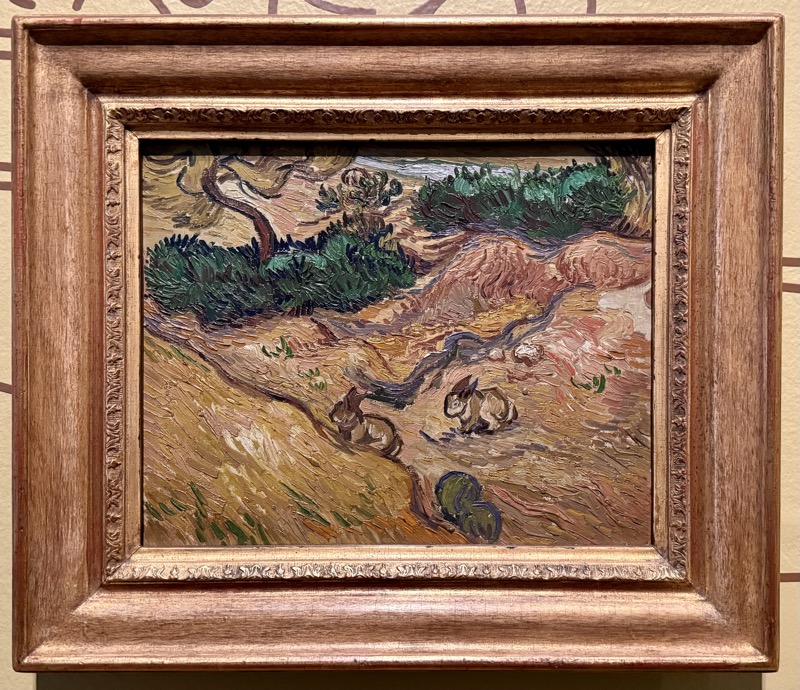
…and a vignette on display by the museum, which showed one of the rabbits from the field of this painting compared to a photograph of a rabbit. I believe to try and demonstrate how Van Gogh seems to capture the shape and movement of the animal with zero attempt at lifelike reproduction.
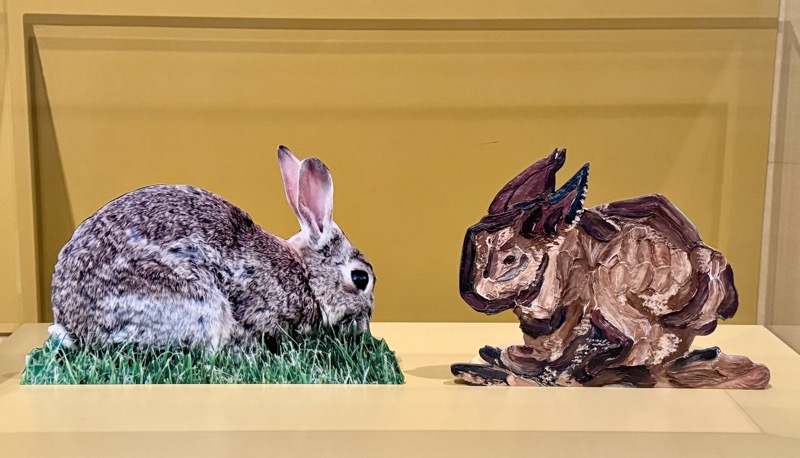
‘Skull of a Skeleton With a Burning Cigarette’, c.1886. An early-ish painting showing a skull with a lit cigarette in its mouth is a sort of joke piece completed while studying at the art academy in Antwerp… art students, huh? They never change.
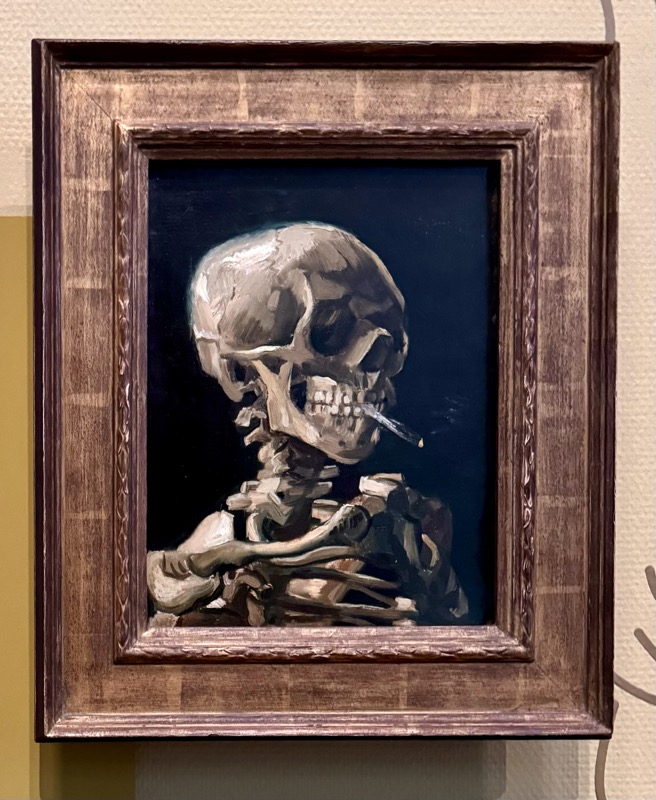
‘Self Portrait with Grey Felt Hat’, c.1887.
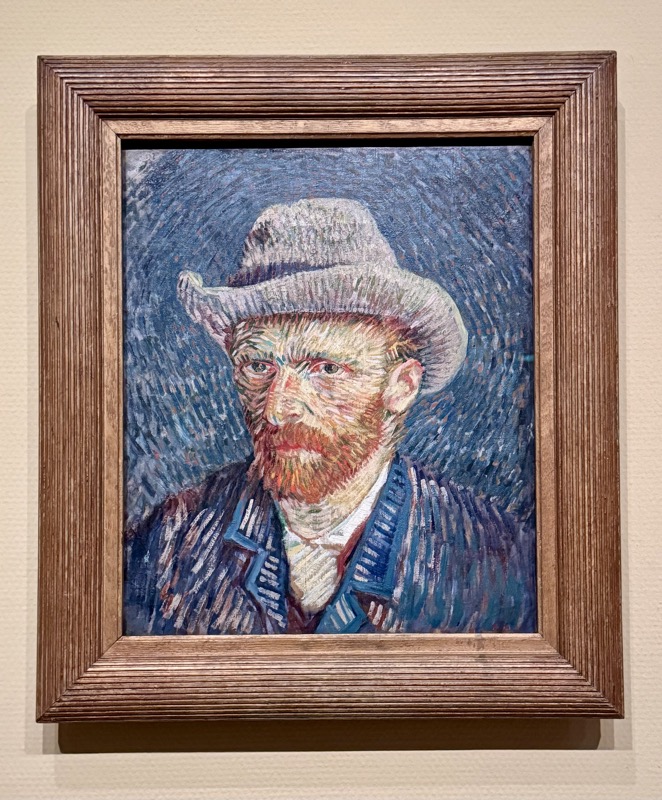
It’s amazing how the impressionists create light and tone by their creative use of colour – they all did it, would make a skin tone have depth and texture but somehow instead of using blended hues of skin tone, they usedcrazy blue, green or in this case, even red paint. It’s a super commonplace technique now, but when these guys were bucking against the realism of the works that came before them, it was extraordinary.
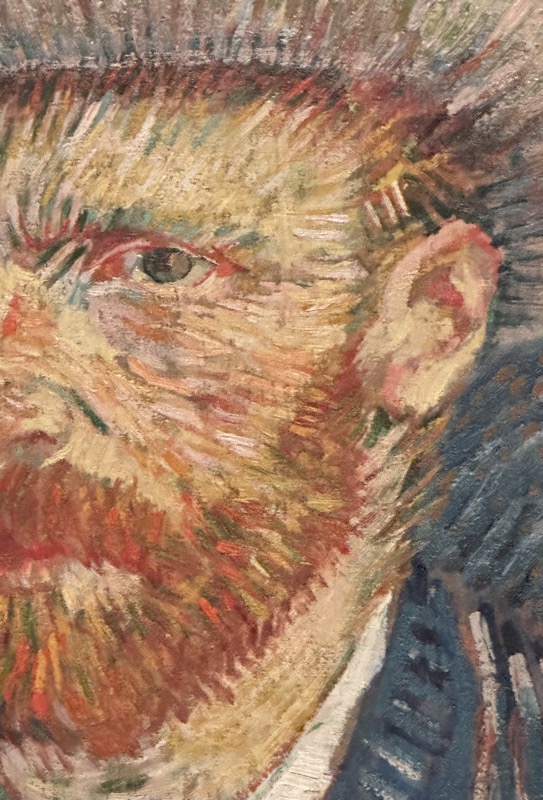
‘Daubigny’s Garden’, c.1890.
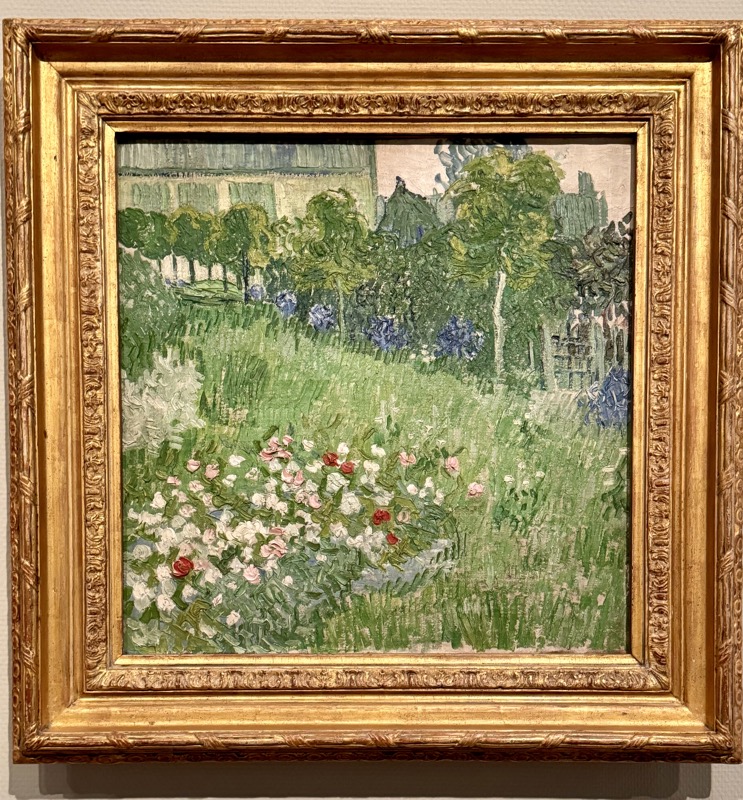
All the textures!
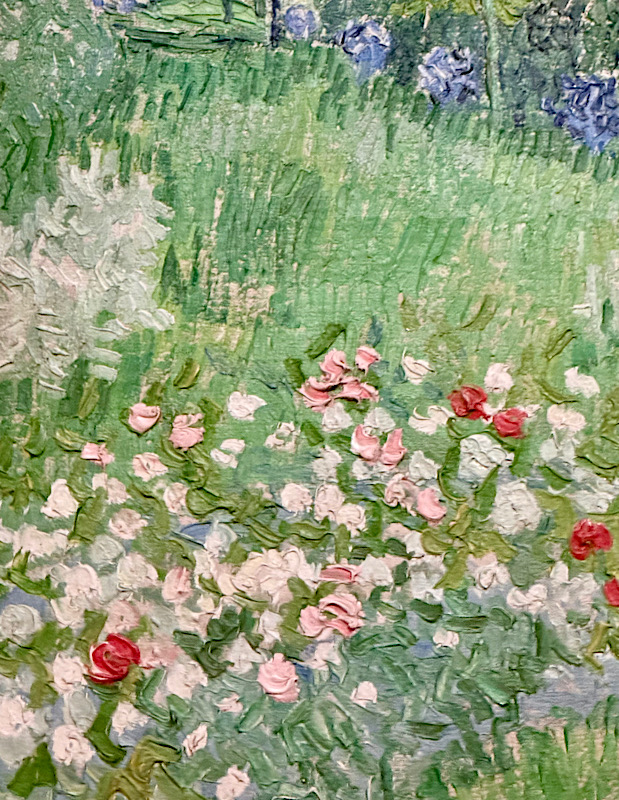
‘Zonnebloemen’ c.1889… which I think is a far more romantic name than ‘The Sunflowers’, as English speakers know this, Van Gogh’s most famous work. I can’t stress enough how much I have HATED this artwork for literally decades. Very likely unfairly, at that. You see, the IVF clinic that I attended from 1999 until 2008 trying to have our little family had a print of this hanging in the waiting room, and every time I was kept waiting – this is what I was staring at. It was there when I received bad news, it was there mocking me with it’s bright and sunny disposition when I felt at the lowest of my lows – and it didn’t matter how many times I told my specialist how much I hated staring at this fucking print, he never took it down. Actually, that’s not accurate, he did eventually take it down and replaced it with a huge black and white Anne Geddes style portrait of his own newborn daughter when she came along… which was moderately better, but also sad in an entirely different way.
Anyway, I may have judged the little sunflowers print a little too harshly as lifeless, boring, and way too fucking yellow! Turns out this is a beautiful painting, and like most of Van Gogh’s pieces, exquisitely executed.
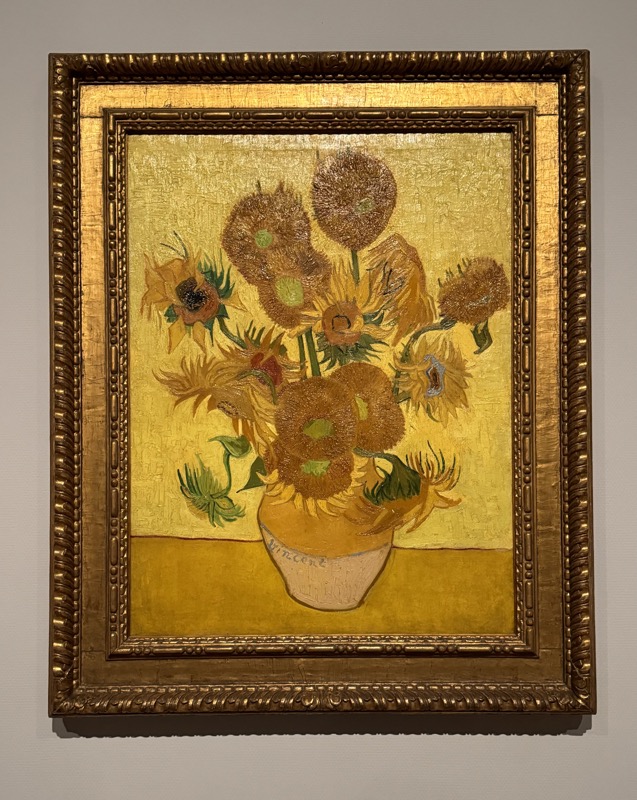
This painting is on the Ground Floor and almost available to you as soon as you enter the gallery – but for some reason, we missed it entirely and saw it only as we were leaving.
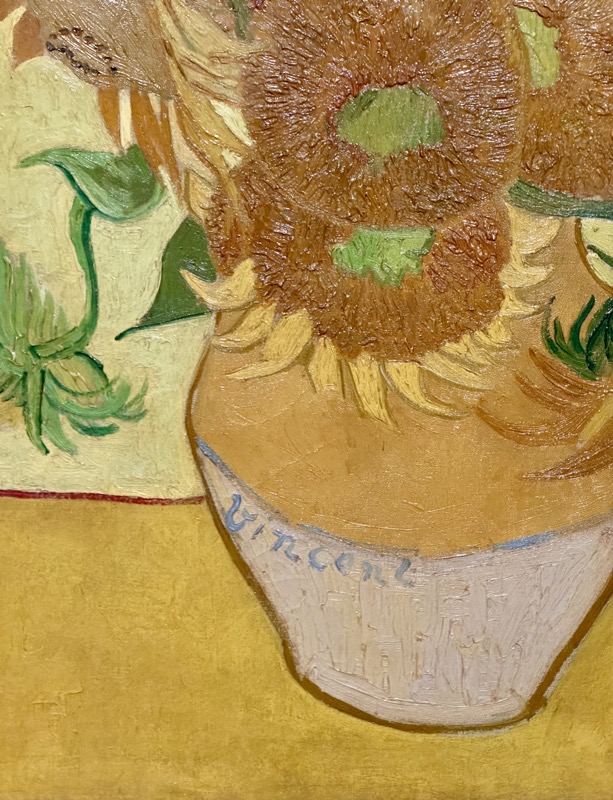
And of course one of the best things about museum hopping is… exiting via the Gift Shop. I was expecting to see sunflower adorned EVERYTHING, but instead Miffy in Sunflower dresses seemed to dominate the shelves. I was vaguely tempted to buy one to take home as a gift for a friend; right up until I saw the €30 price tag! That’s AUD$56 for a 7” mass produced stuffed, crocheted bunny. Sorry, not happening.
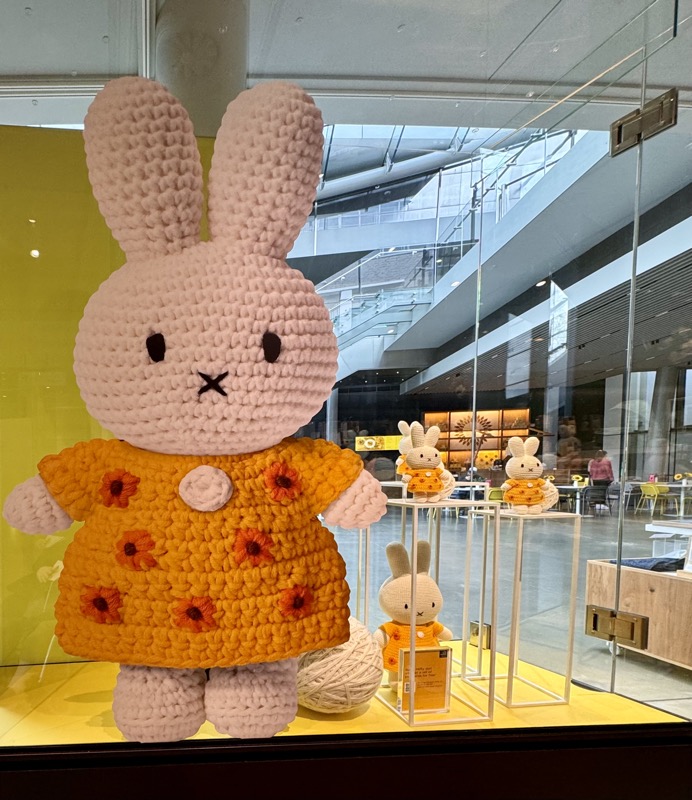
The other unexpected gift shop juxtaposition was a smattering of cute but weird, Pokémon/Van Gogh cross over merch? Apparently they had an exhibition that was running until Jan this year which was all Pokémon paintings done in the style of Van Gogh. That’s one way to get the kids to engage with art!
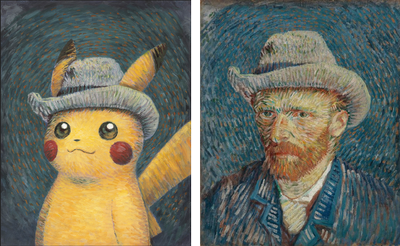
Van Gogh Museum is a solid 7/10. Seen it, probably wouldn’t come back for a re-run next time I’m in town. It’s missing some very famous pieces that I’ve seen in other museums – The Starry Night, The Cafe Terrace at Night, and The Bedroom at Arles just to name a few. I have been fortunate enough to have seen most of these pieces in the past, but it feels like they belong here, and they’re just not. :/
After this we wandered off to find a bit of late lunch. I’m afraid sticking to my low carb diet is going to prove impossible here with the main lunch offerings being sandwiches, burgers, hot dogs and of course the world famous Dutch fries drowning in cheese or served with mayo…
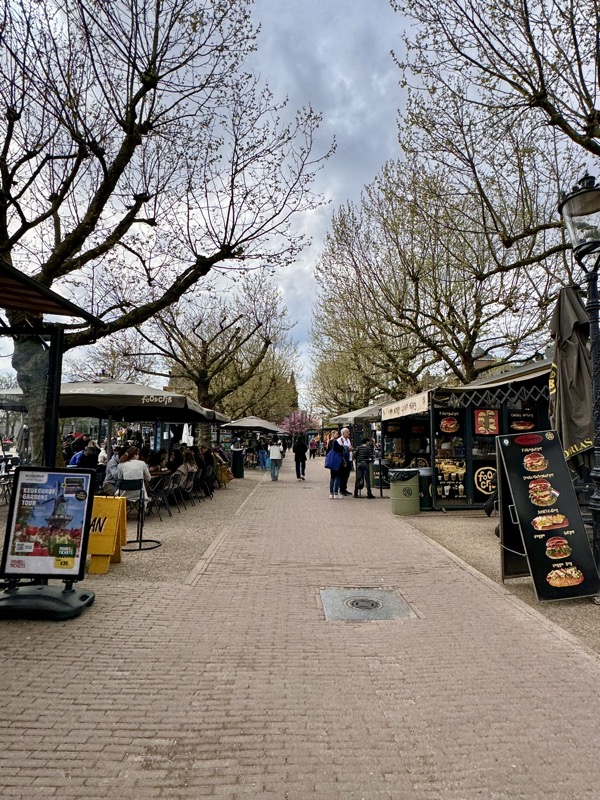
Tasted just like Icelandic hotdogs!
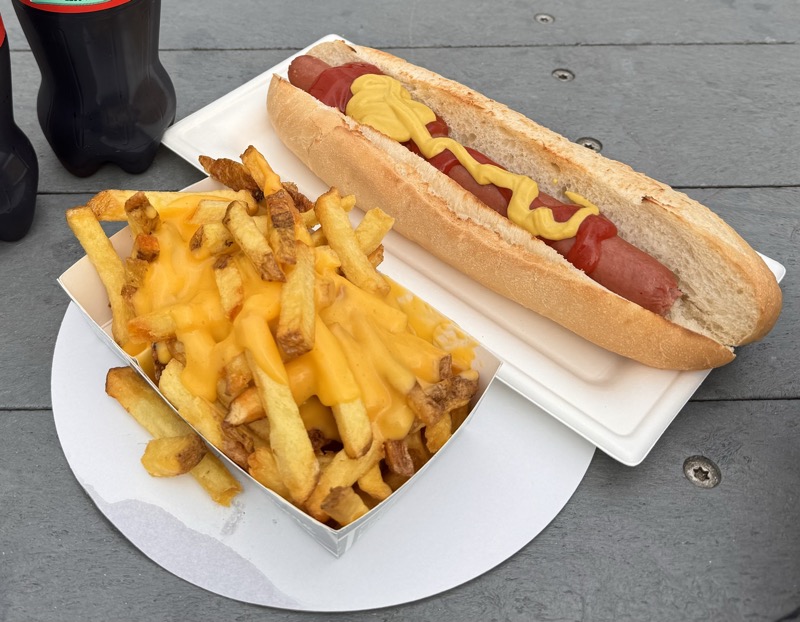
Just across the park from the Van Gogh Museum is the Amsterdam Rijksmusuem, which is the national museum of the Netherlands dedicated to Dutch Art. When I was in Amsterdam last, way back in 1995, Holland was one of the last countries we visited on our Grand 70 Day Tour of Europe, and we were admittedly a bit museum’d out and blasé about seeing more old paintings, so we skipped it. Thirty years late, but I’m glad to have the chance to come back and finally check it out.
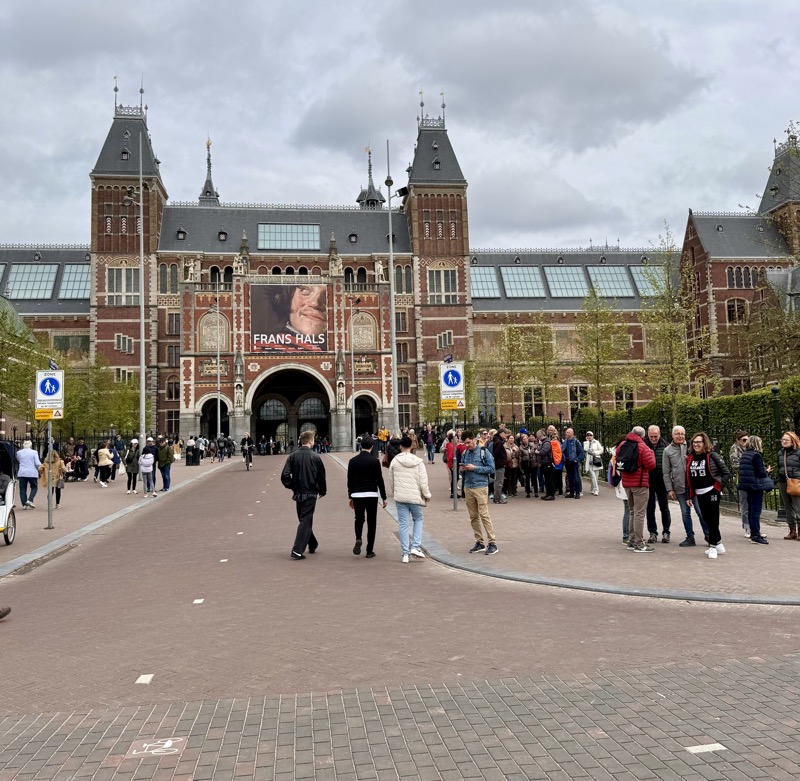
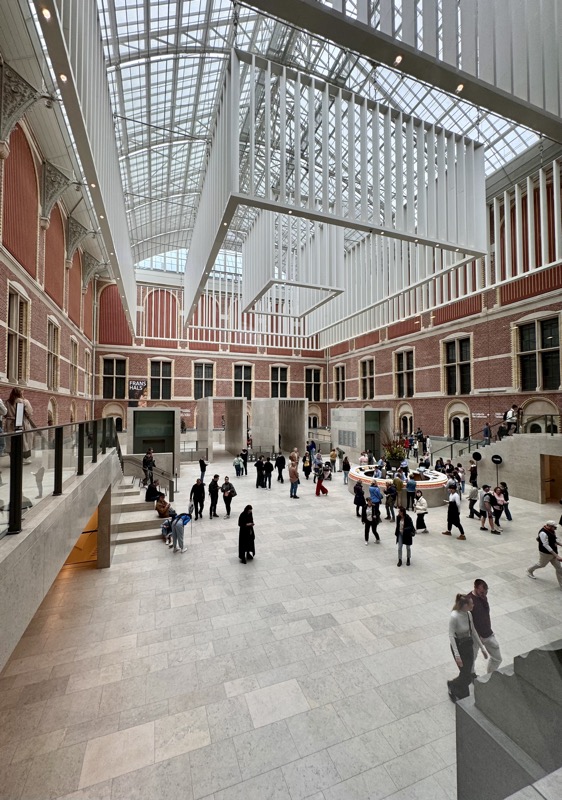
I’ve taken a pile of photos of interesting objects, some of which I have the description for and some I’ll have to go look up later. It’s entirely likely that the entire collection is digitised online somewhere, but old habits die hard. 🙂
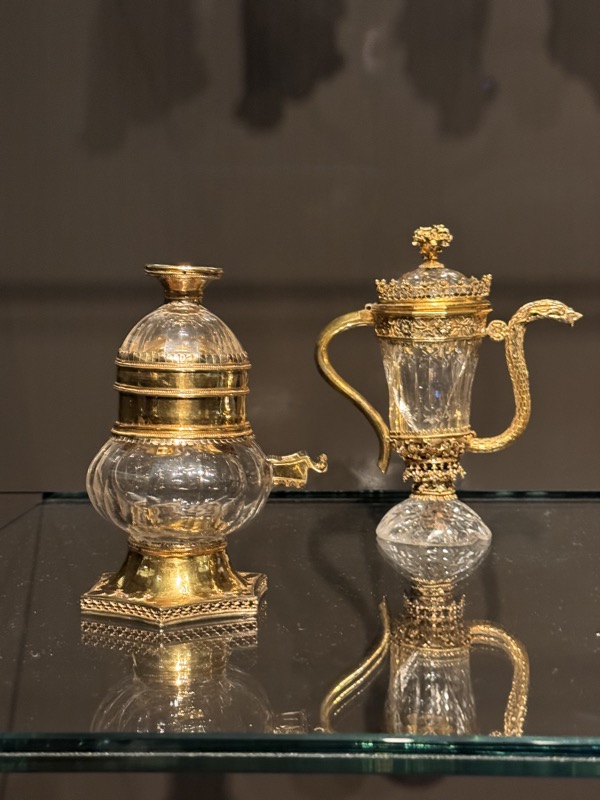
Reliquary in the form of a triptych. Paris c.1400-1420 : miniature altar doubles belonged to someone associated with the Parisian court. From the descriptive plaque, ‘Seeing the Christ’s tormented body, the owner could mediate on his sufferings at any time.’ Sounds like fun for the whole family!
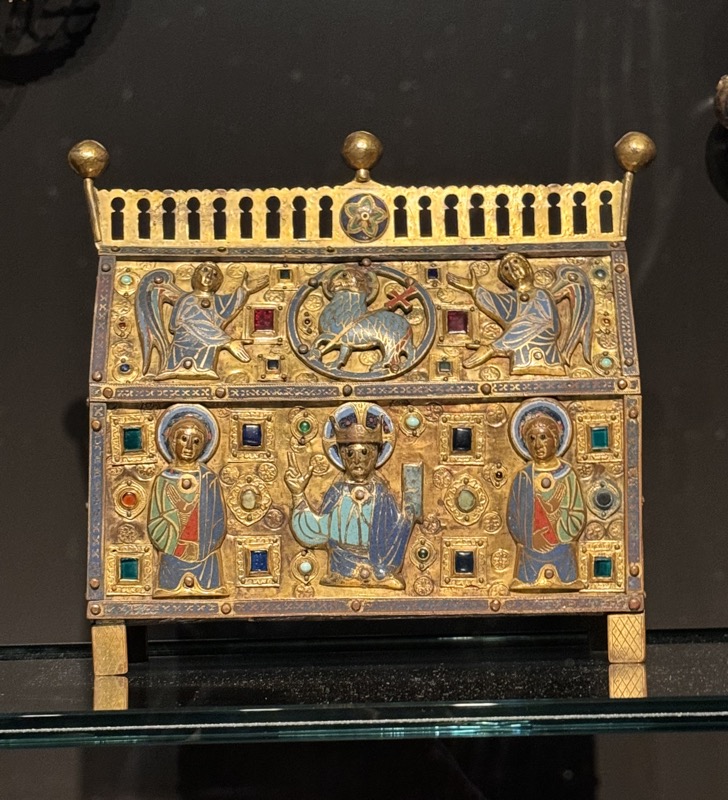
Ivory mirror case depicting three courtiers. French, c.1425
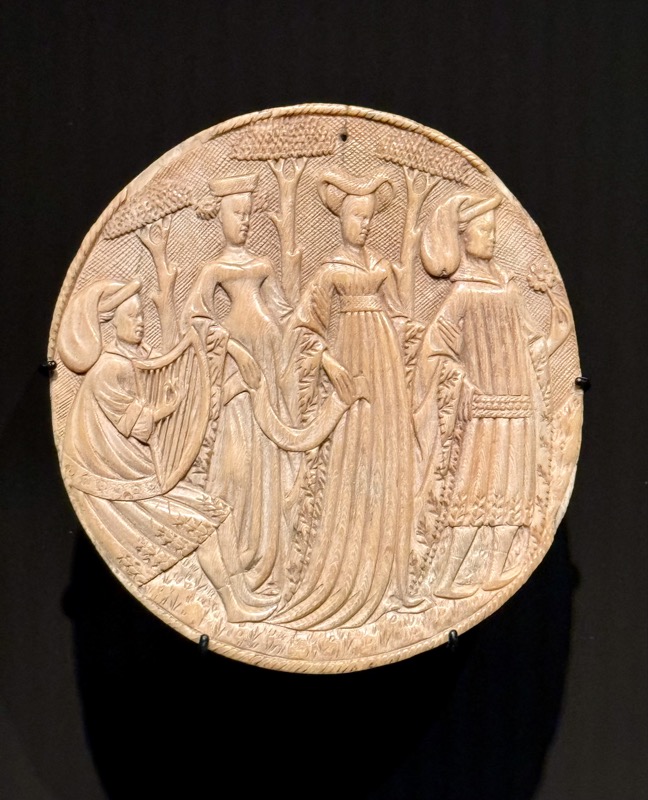
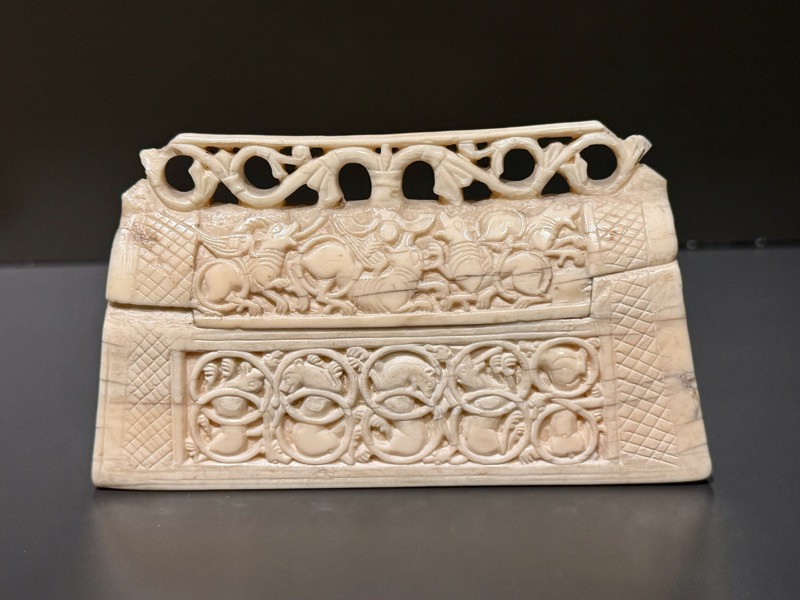
‘The Raising of Lazarus’, attributed to Aertgen Claesz, also called Aertgen van Leyden, oil on panels, c.1560.
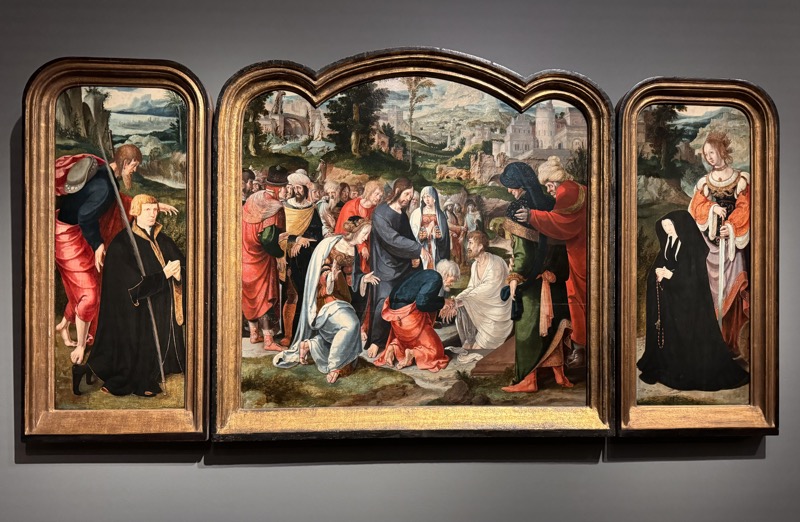
Not so fast Rjiksmuseum! We see what you did there – this one is clearly AI generated!
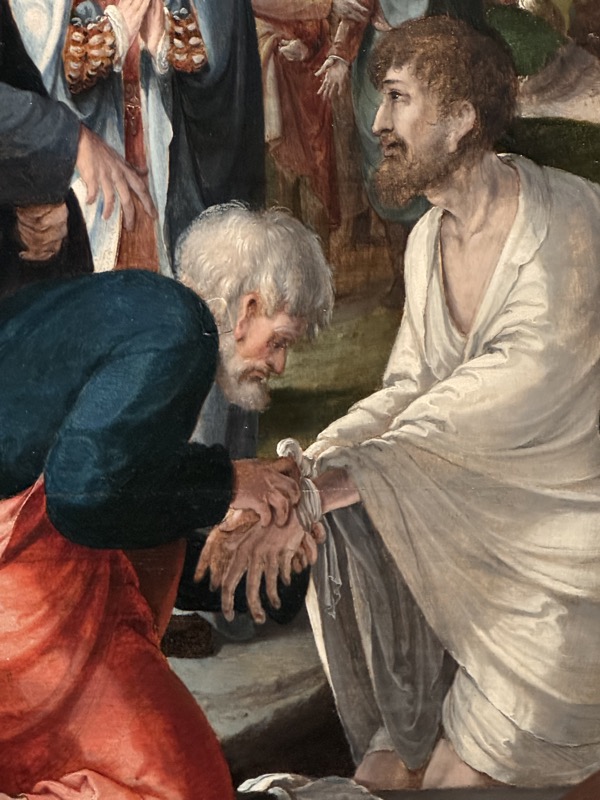
Chainmail, Low Countries, c.1400-1500, iron.
Made of iron rings linked together, this one weights over 11 kilograms. With its cute little button at the collar it looks like a medieval polo shirt.
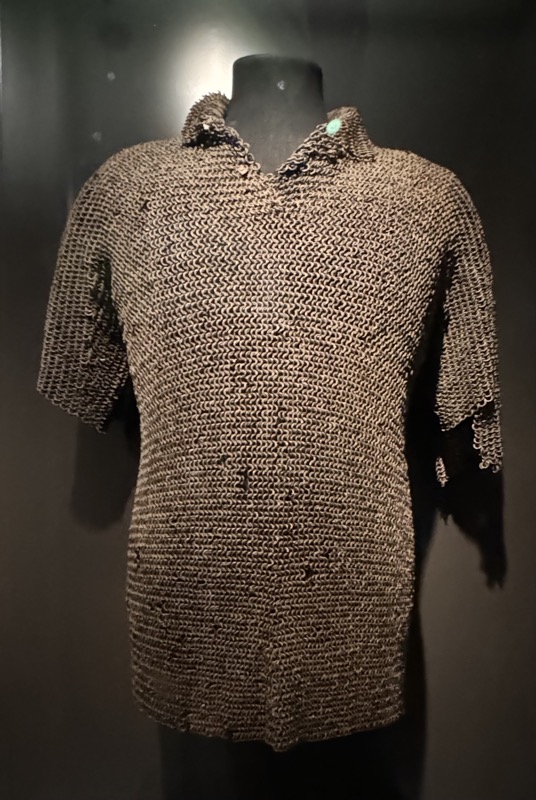
Parvise with St Andrew’s Cross, Burgundy c.1474-1475.
Covered in symbols of the Duke of Burgundy – the red St Andre’s Cross, four gold firesteels, and black-white flints with red flames.
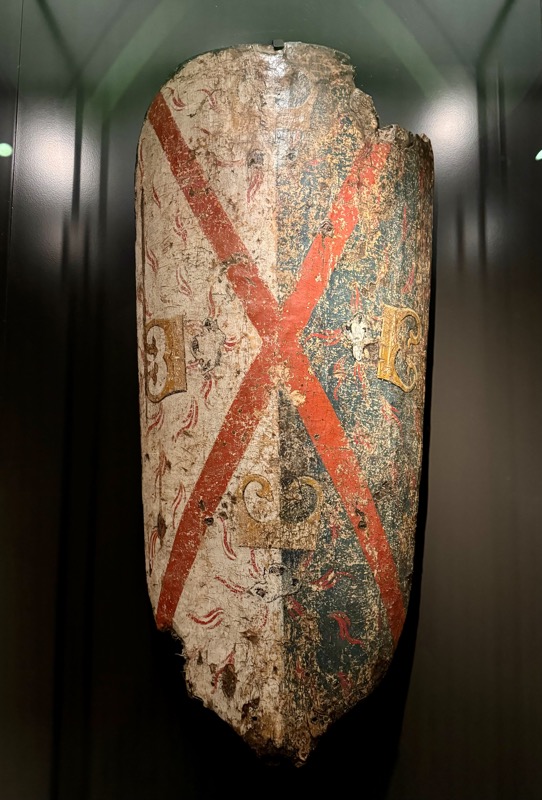
Engelbert II van Nassau, oil on panel, c.1480-1490. Prominent noble in the Duchy of Burgundy, has the fancy prestigious chain of the Order of the Golden Fleece and a cool falcon.
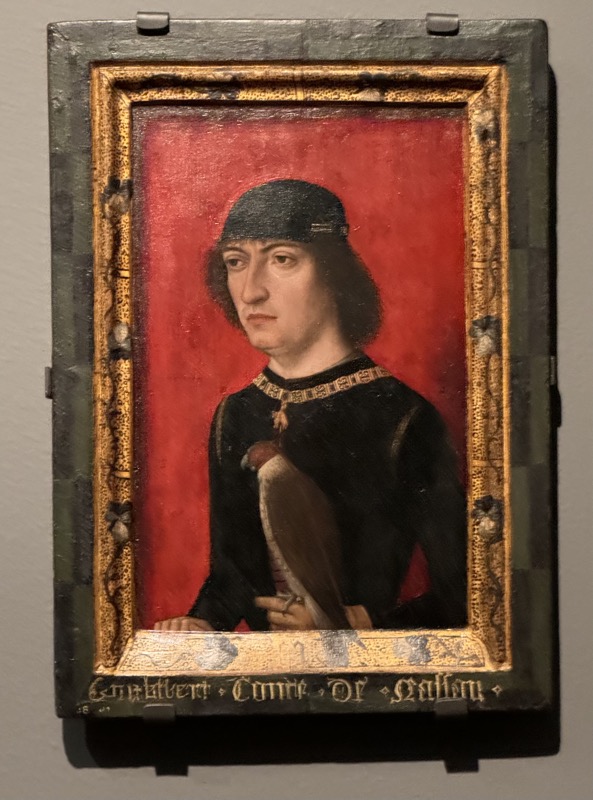
Panels from an organ case (Church of St Vitus) by Jan Eerste. Utrecht c. 1510-1520.
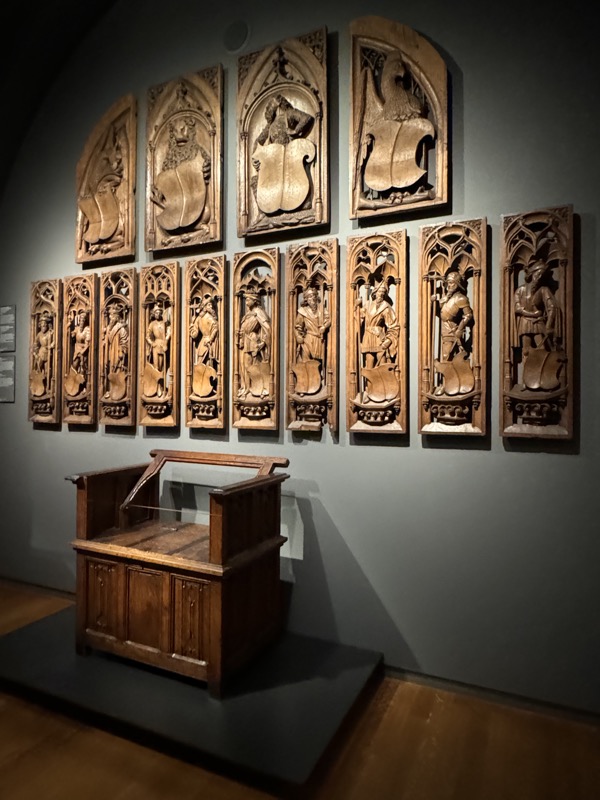
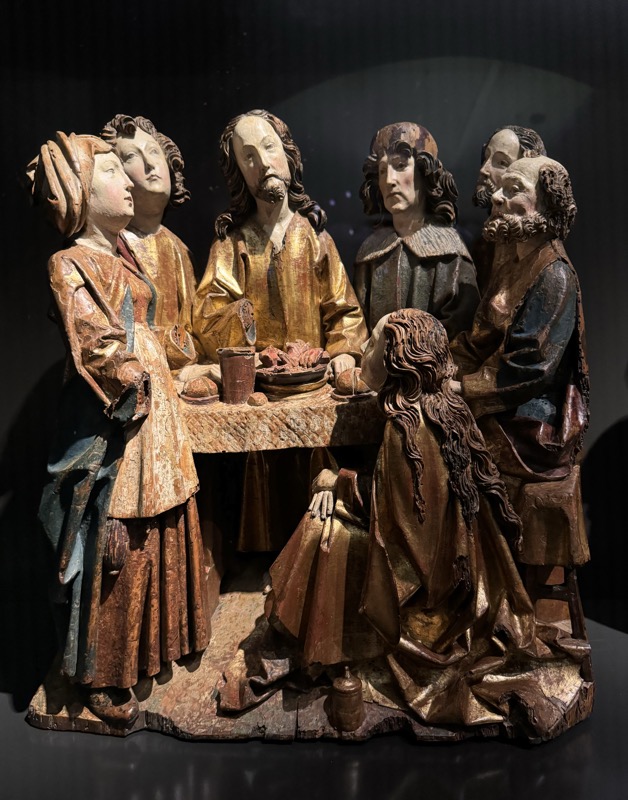
Collection of Aquamantiles, mostly in the forms of Lions. 14thC.
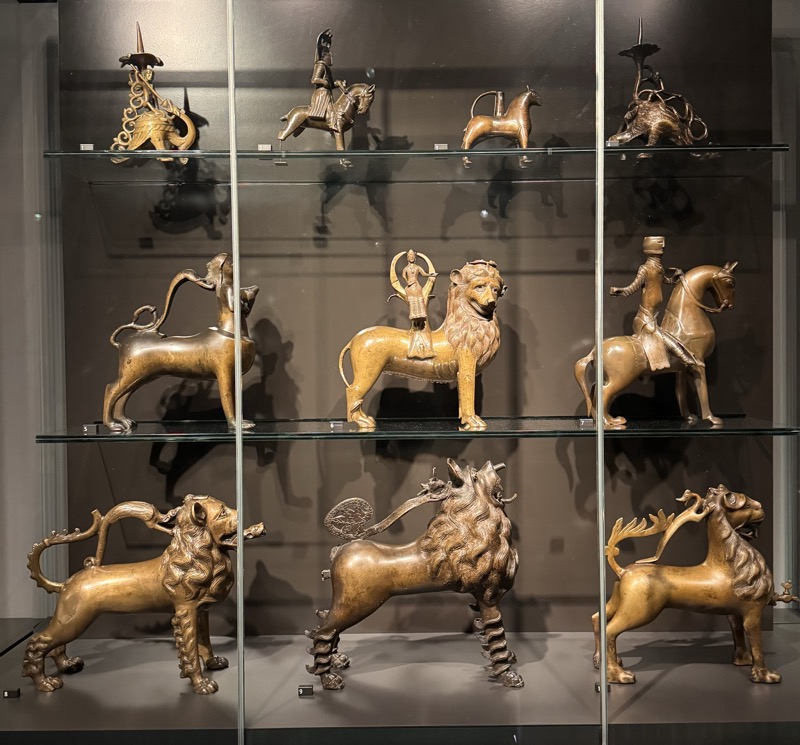
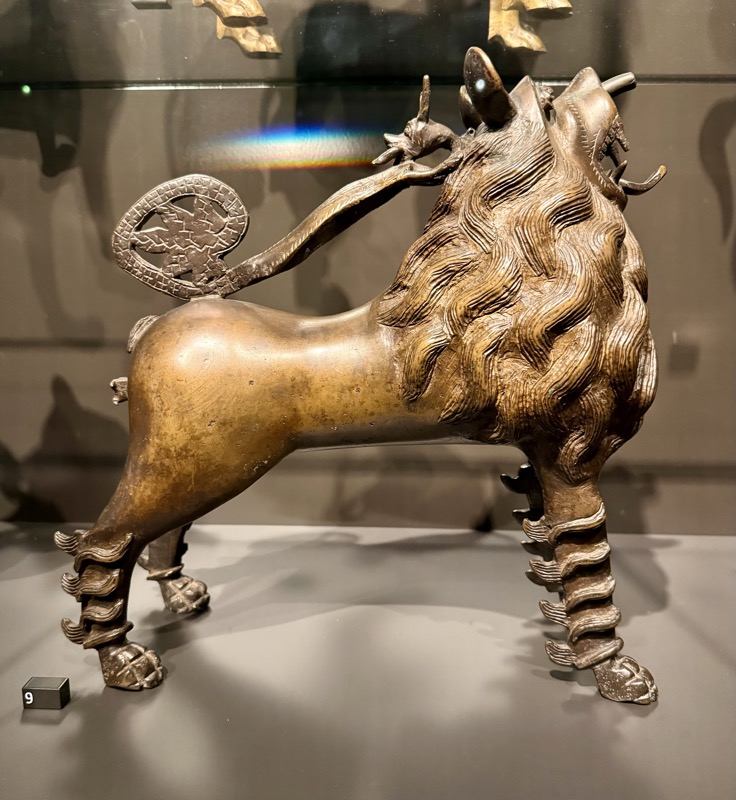
Above: Lion Aquamantile, attributed to Master Berhuser or his workshop. Konigsberg (now Kaliningrad) c. 1375-1300. Copper alloy.
Below: Aquamantile, craftsman unknown. Nuremberg, c.1400. Copper alloy.
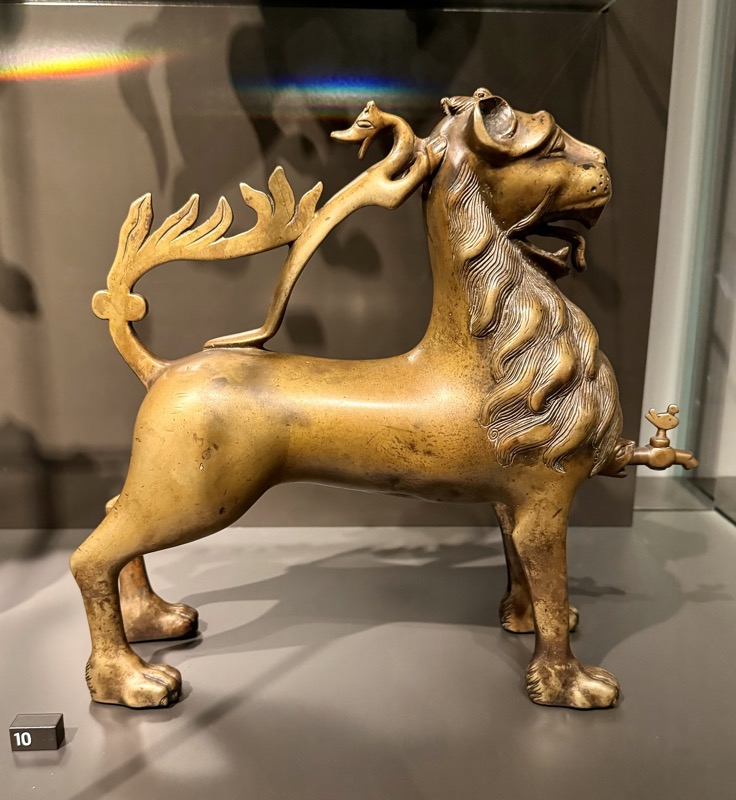
Portraits of an unknown Couple. Maarten van Heemskerck. Haarlem, 1529.
The gentleman is busy with his important bookkeeping, while his wife is virtuously sitting at her spinning wheel. A conscientious merchant is a trope from occupational portraits of Dutch citizen around this time.
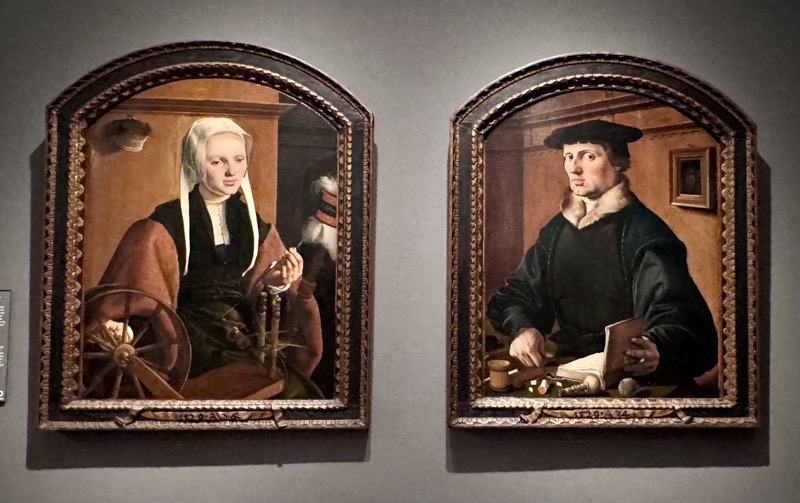
Drinking Horn of the Amsterdam Company of Arquebusiers.
Attributed to Aren’t Cornelia’s Caster. Amsterdam, 1547. Silver and buffalo horn. This luxury drinking horn playe a prominent roll in civic guard ceremonies. The horn was passed around the table and everyone drank from it. In this way the militamen expressed their common bond and unity. The claws in the silver mount are the symbol of the arqubusiers… and that’s how they all got the plague!
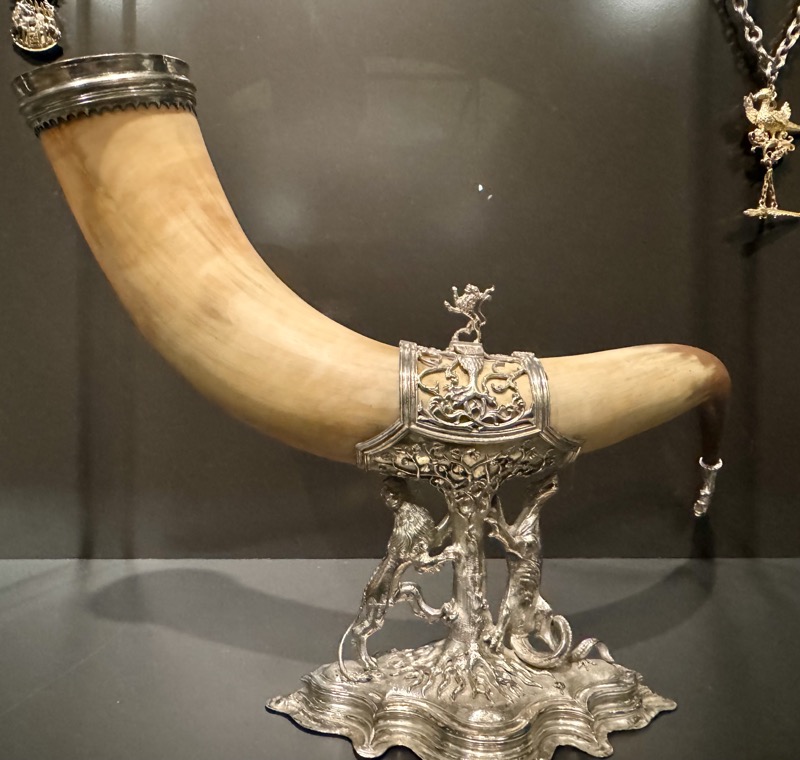
Ripped baby Jesus doesn’t skip ab day!
The Holy Family, Jan Cornelia’s Vermeyen (c.1503-1559). Oil on Panel.
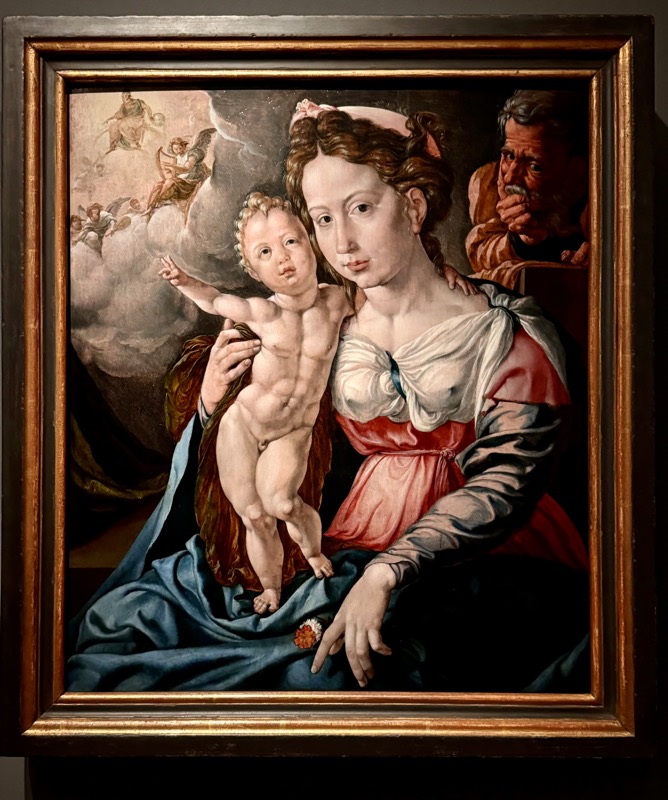
Chest, Italy c.1450-1500. Painted poplar wood.
Heraldic Cassone covered in a family’s coat of arms. Chests such as these were used on the occasion of marriage to hold a bridal trousseau, consisting of clothing, fabrics and precious dowry items. They were usually set against a wall and could be used for travelling. This trunk is fully 1.5m long.
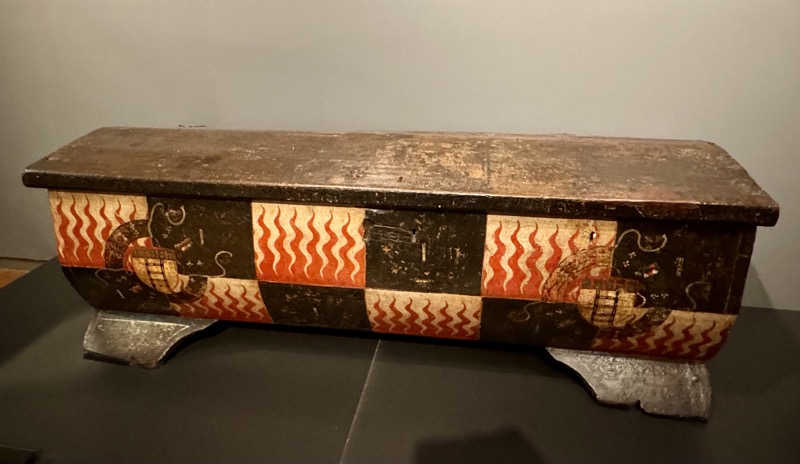
I couldn’t find the description on this amazing vessel! But it’s gorgeous.
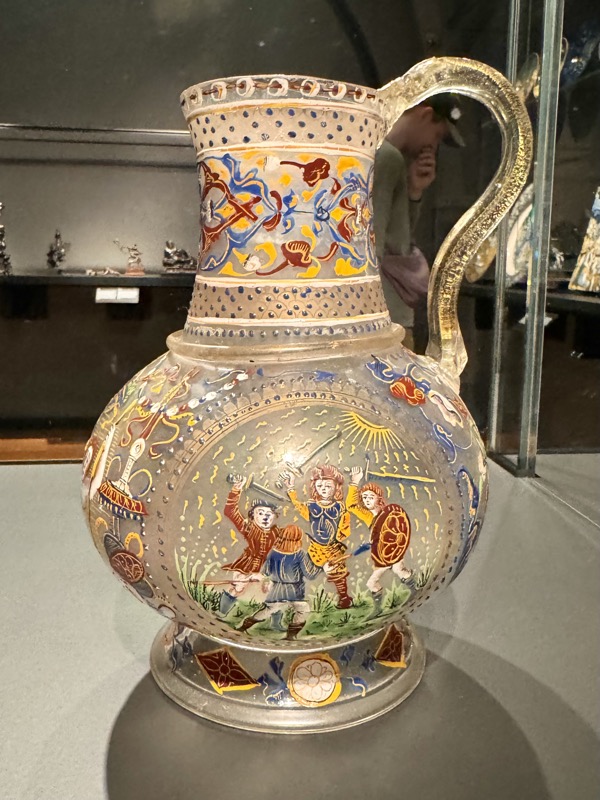
Messenger’s badge (bodebus) of Amsterdam.
Attributed to Jan Cornelia’s Coster, Amsterdam, 1548. The badge was worn by a travelling civic messenger and was an offical insignia. The elaborately worked decorations includes the arms of Amsterdam under the imperial crown. This thing is huge – fully 6” across and probably a fairly hefty weight.
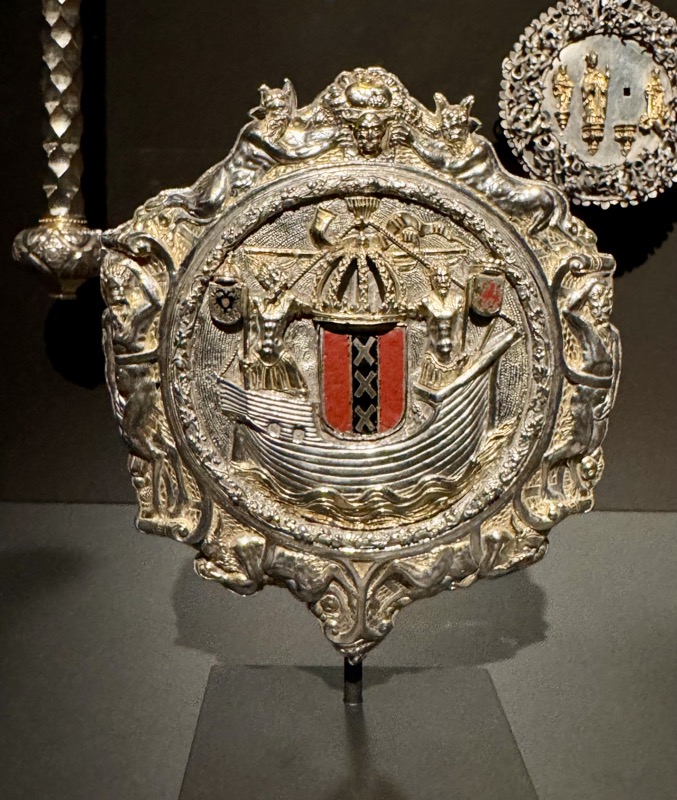
Ceremonial chain of the Guild of Saint George of Zevenbergen. Bergen op Zoom or Breda, c.1525-1546.
Visible on the chain are Saint George and his arms, which signify the collar belonged to the guild. The seven mountains of Zevenbergen are depicted as are oak leaves which stand for religious steadfastness, storks for piety and respect to church, state and master.
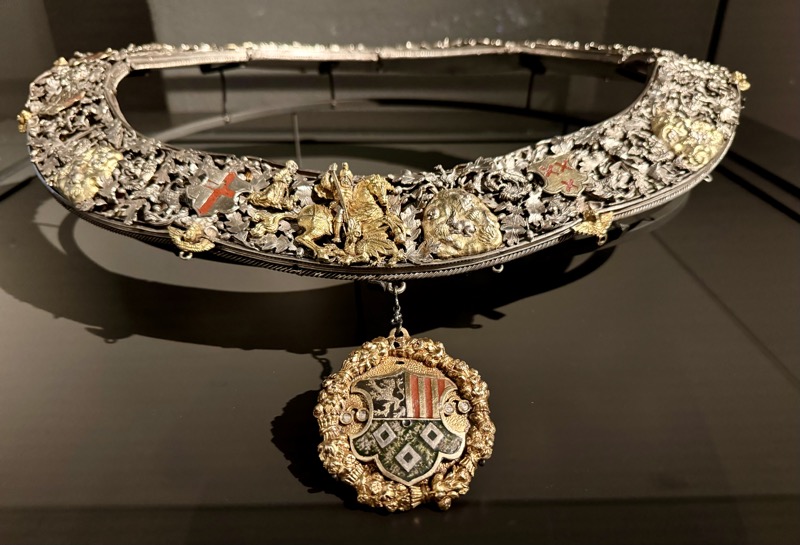
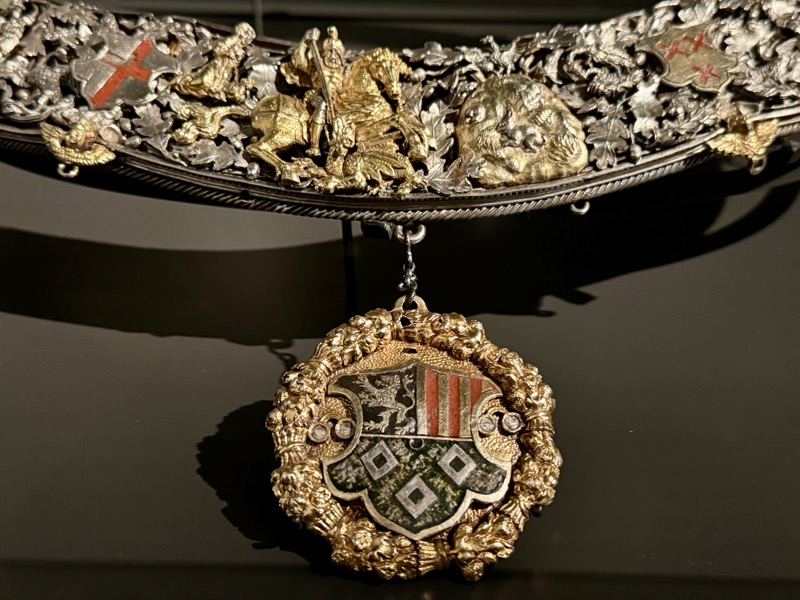
Hunting horn, Johannes Matheus van Kempen, c. 1848, parcel-gilt silver.
In 1849 King William II presented this horn as a prize for the faster hunter at Het Loo Palace. Its shape is derived from an ox horn and it is embellished with images of predators and prey.
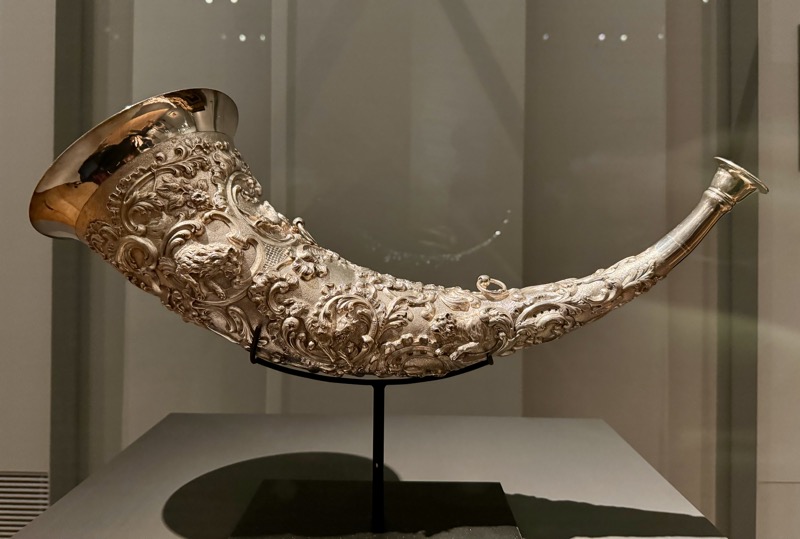
Tapestry depicting the arms of Charles V. Worked by Willem de Pannemaker (active 1535-1578). Wool, silk, silver and gold thread. Brussels, c.1540-1555.
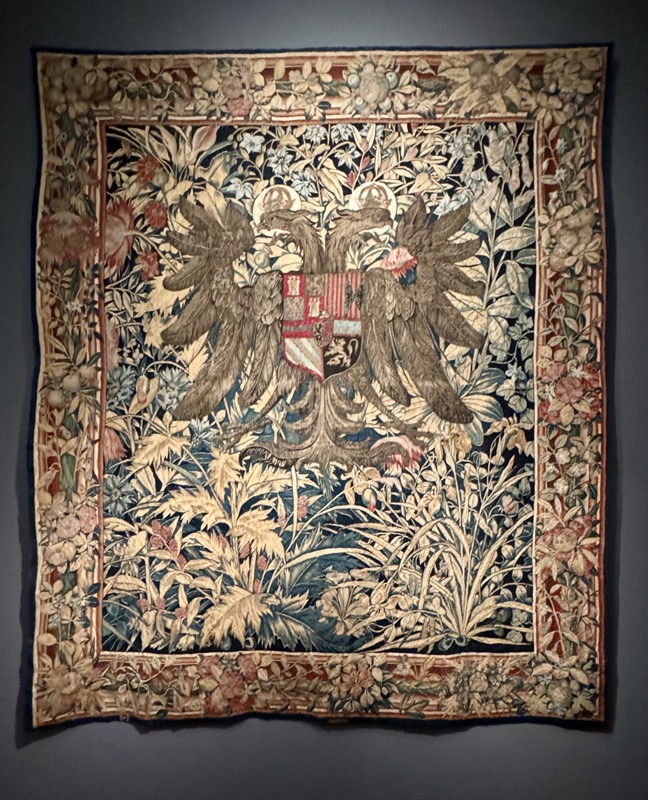
Weepers from the tomb of Isabella of Bourbon (wife of Charles the Bold). Cast by Reiner van Thienen. Brussels, c.1475-1476. Originally placed at the abbey of Saint Michael in Antwerp, the tomb was surrounded by 24 mourning family members and ancestors known as ‘pleurants’, (weepers).
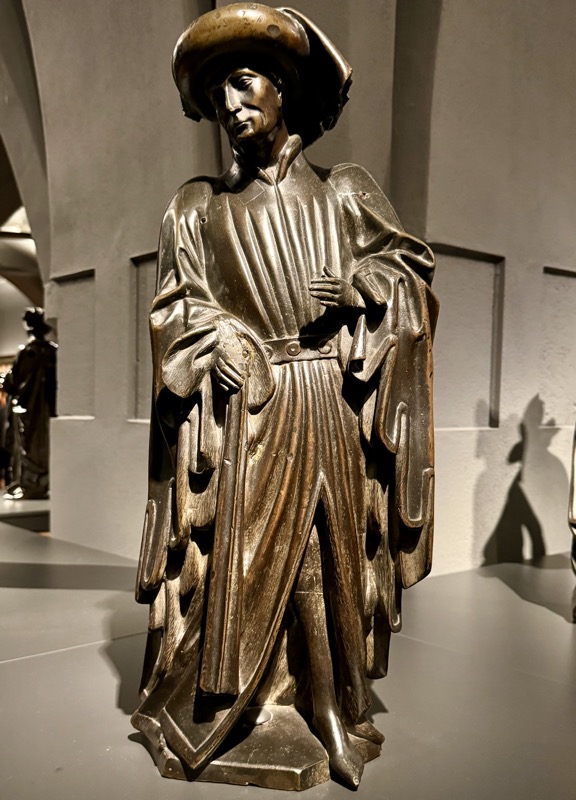
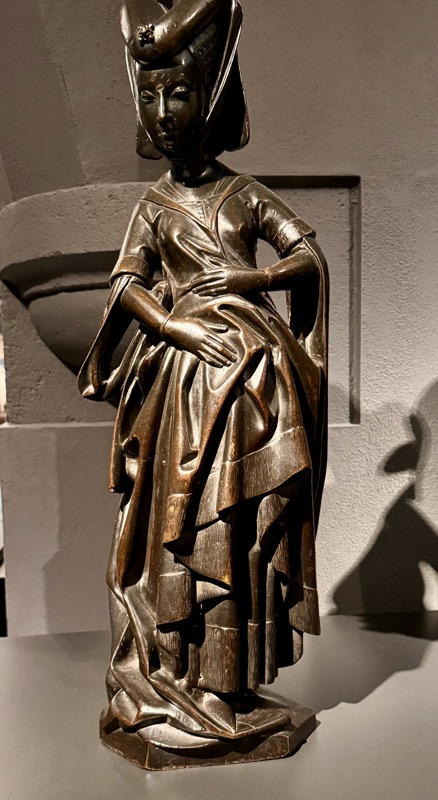
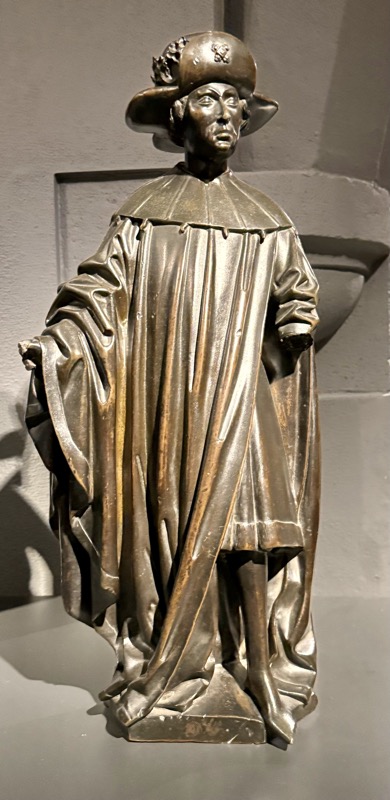
Soup Tureen, Jean Baptiste Claude Odiot, Paris, c.1819. Silver and gold gilt.
Believed to have belonged to a 140 piece dining service belonging to the Russian empress.
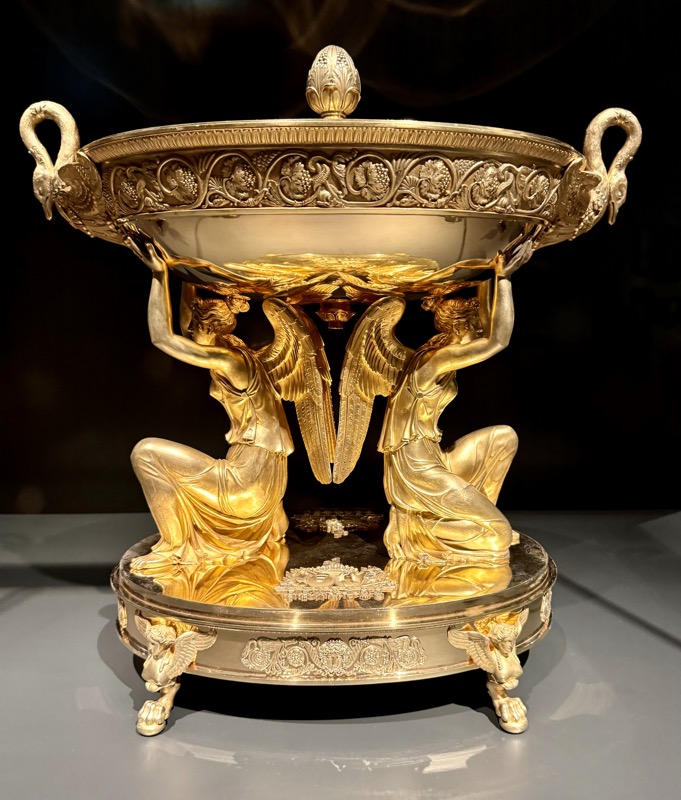
Cabinet, Pierre Gole, Paris c. 1655-1660. Various kinds of wood, veneered with tortoiseshell, ivory, green-stained bone, and mounts of gilt bronze. Gole was originally from Bergen in what is now the province of Noord-Holland, and established himself in Paris in 1643. Before too long he was apppointe court cabinet maker by King Louis XIV. This cabinet is decorated with floral marquetry, and ornamental technique that was invented and disseminated by Gole.
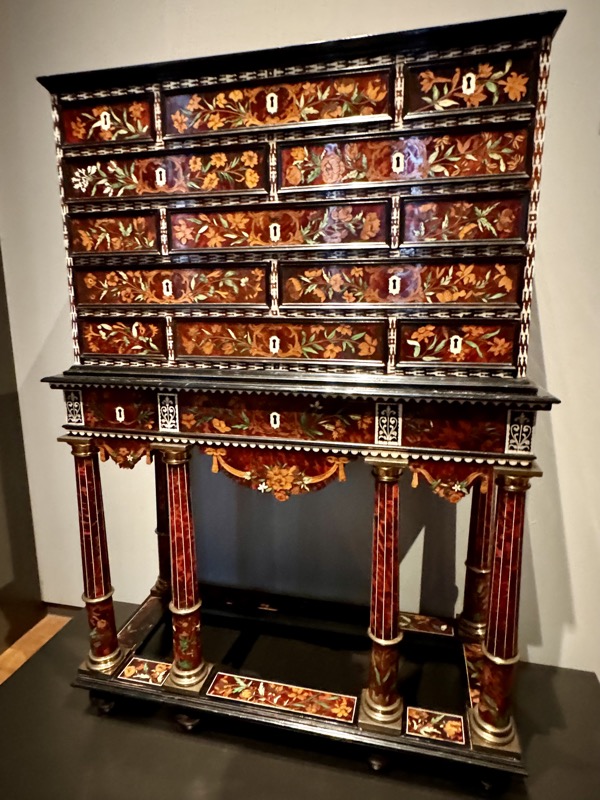
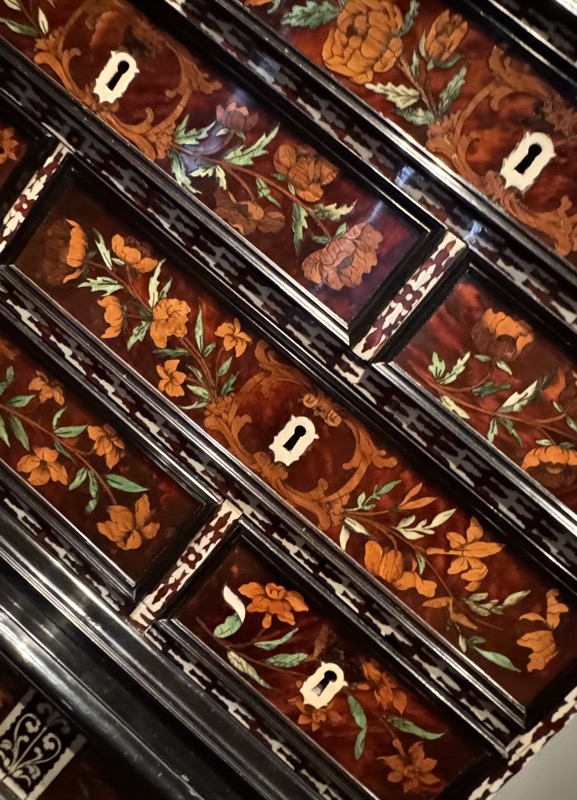
There was an entire gallery full of Delft ceramic ware of various sizes, quality and uses.
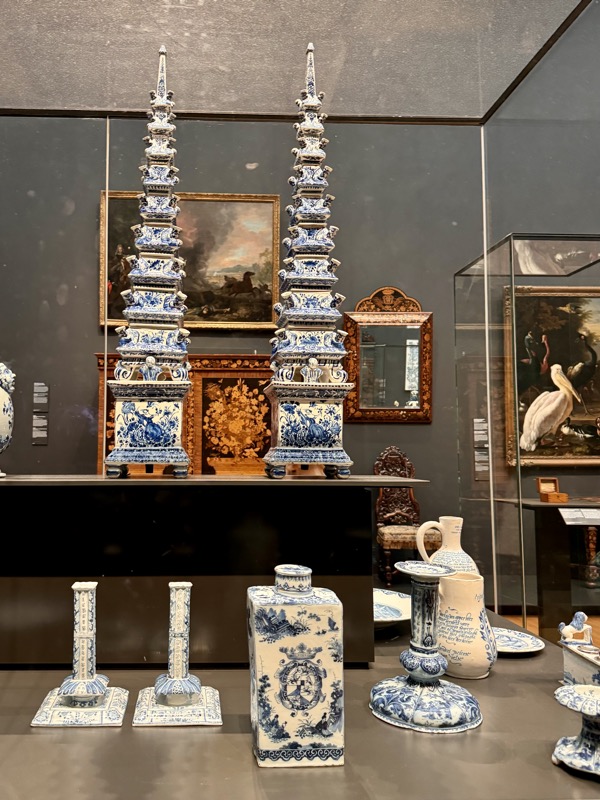
Case with Duelling Pistols. Jean le Page (1746-1834).
Pistols: wood and metal. Case: wood, leather, velvet. C.1808.
This case with duelling pistols and tools was made in the workshop of Jean Le Page in Paris. Up until the Battle of Waterloo (1815), Le page was allowed to bear the name of ‘Arquebusier de L’Empereur’ (Gunmaker to Emperor Napoleon). This case came into the possession of Lieutenant Hengry Sagermans of Brussels shortly after Waterloo, who claimed the pistols were found in Napoleon’s travel carriage which had been abandoned near the battlefield.
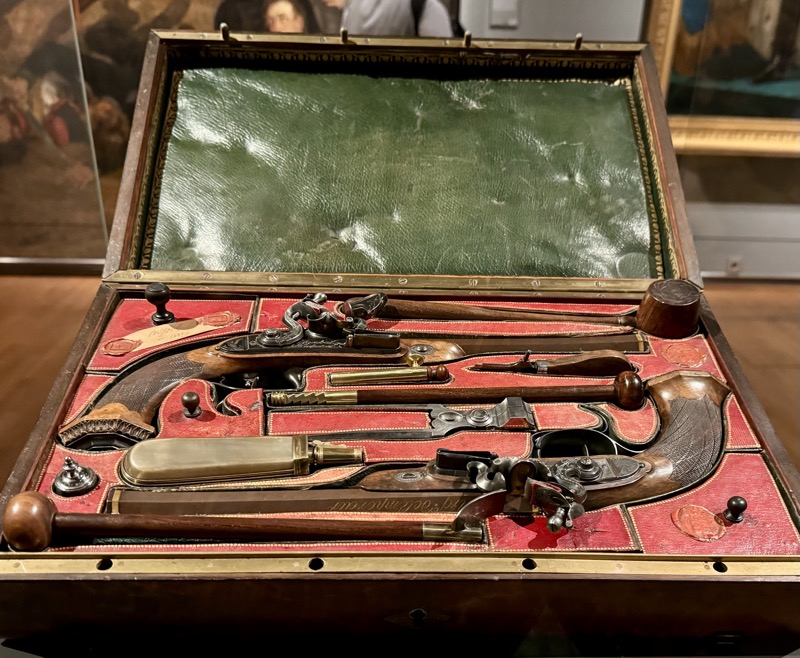
Piece of the stone on which Prince William III set foot on arriving in England at the fishing village of Brixham, on November 15, 1688. He invaded England to overthrow his Catholic father-in-law, James II and to prevent him from turning against the Netherlands. Known as the Glorious Revolution, William’s coup was a great success.
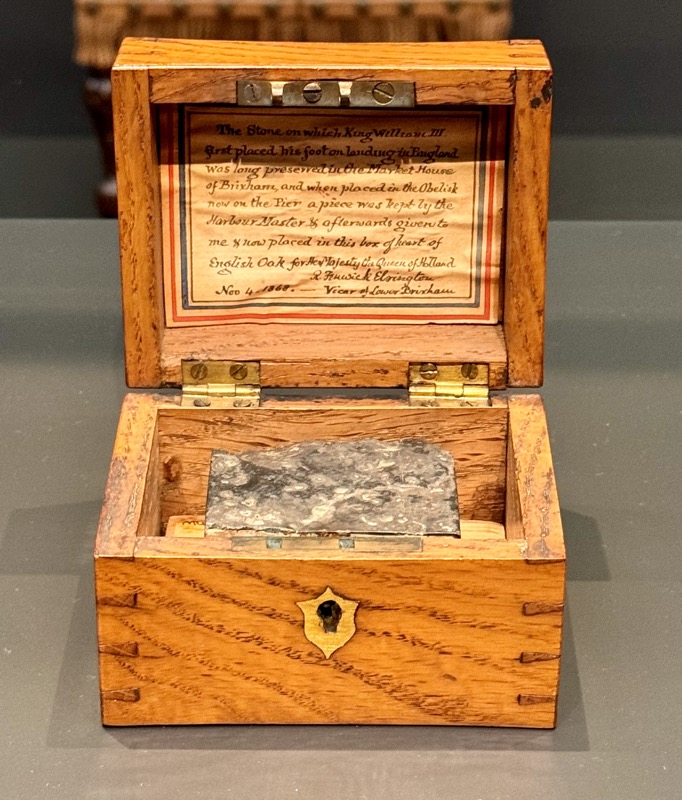
Three door cabinet, Paris, c.1835-1838. Oak, ebony, pietre dure, gilt bronze. Once owned by William II.
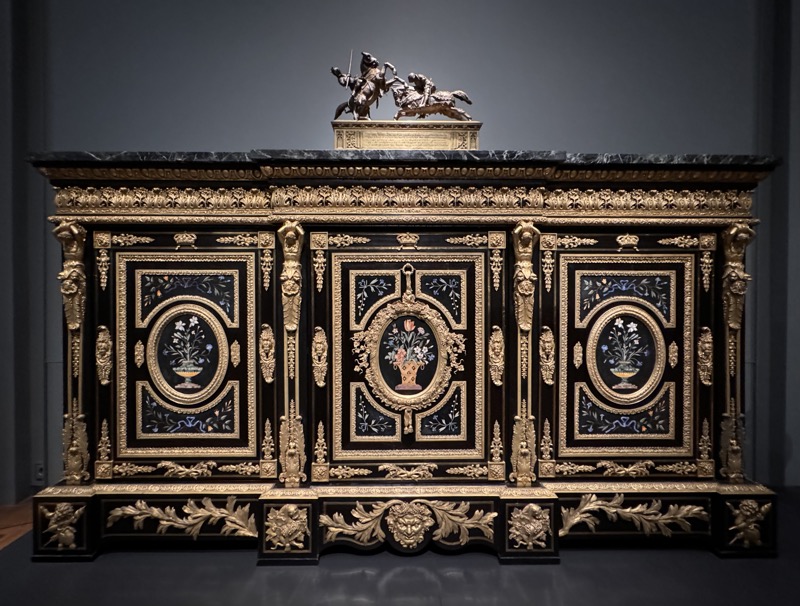
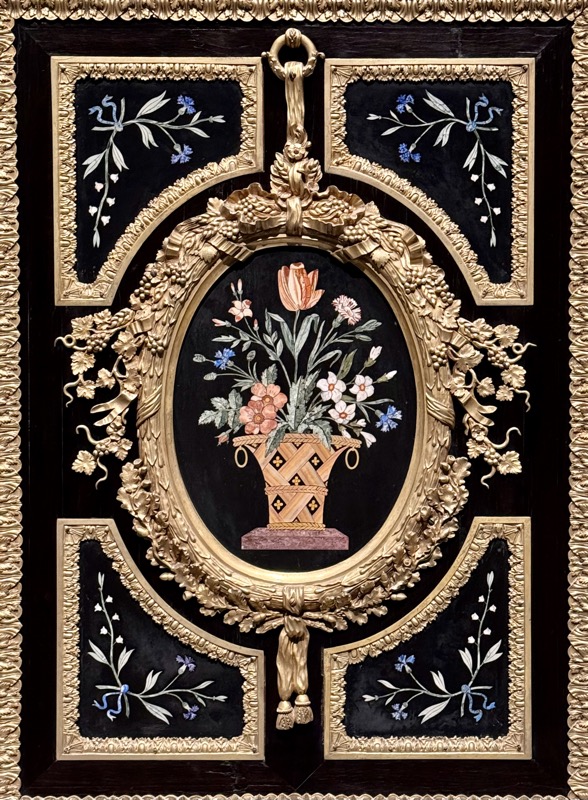
Still life with a Gilt Cup. William Clasz Heda, oil on canvas, 1635.
The range of tones that Heda could paint are astonishing. Objects are beautifully rendered in a most realistic style regardless of surface – pewter, silver, damask, glas,, mother of pearl. Heda specialised in ‘tonal banquet pieces’. Damn, now I want oysters.
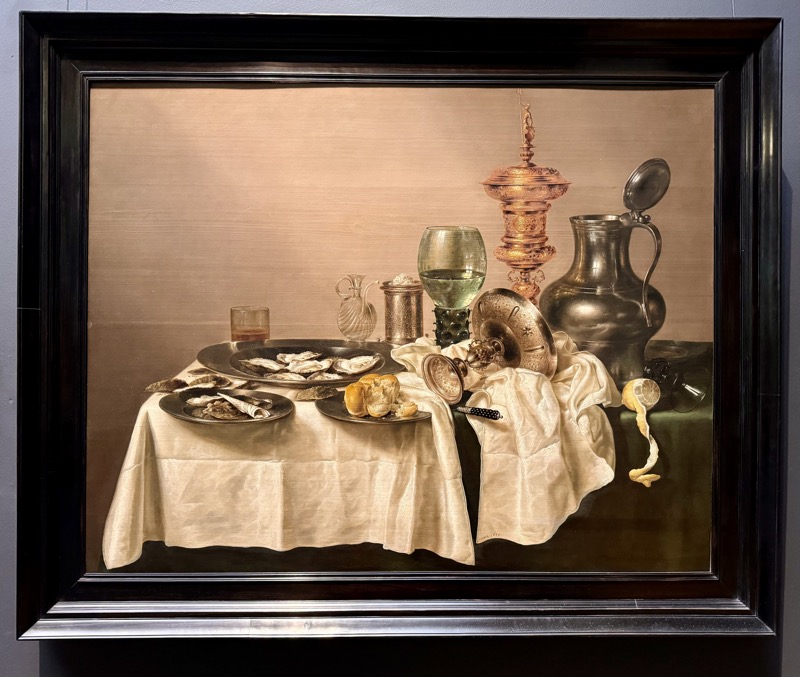

Wandering through these amazing art galleries in Europe, it’s often easy to forget you are wandering through an architectural marvel in its own right. The Rjiksmuseum is an incredibly beautiful building.
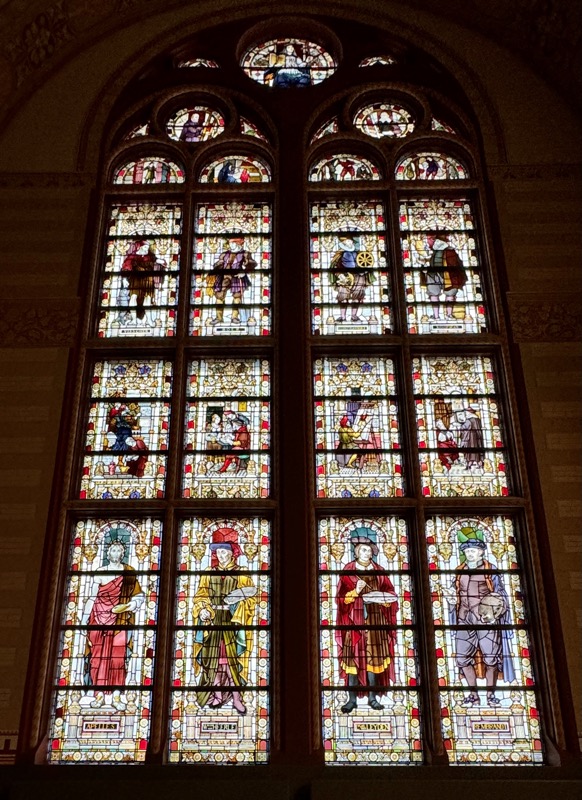
The upper floor houses the great masterpieces of the museum’s collection…
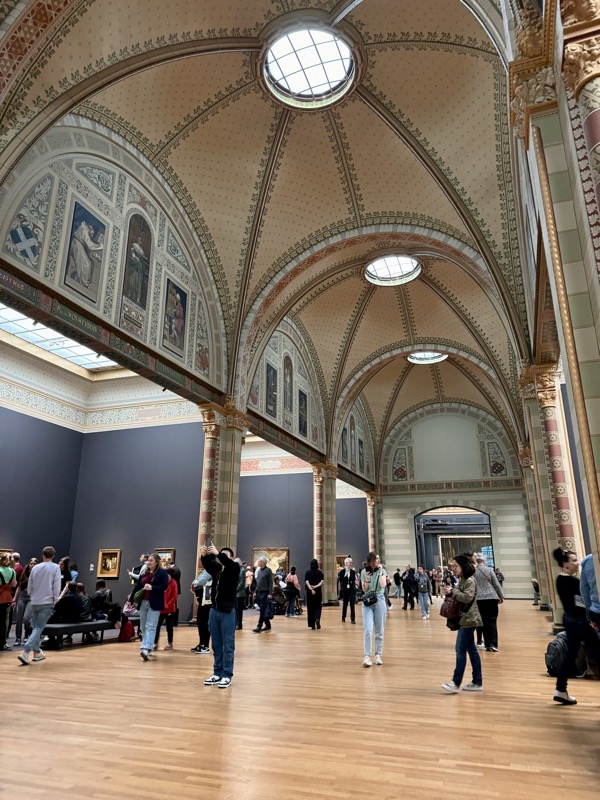
The Love Letter, Johannes Vermeer, c.1669-1670.
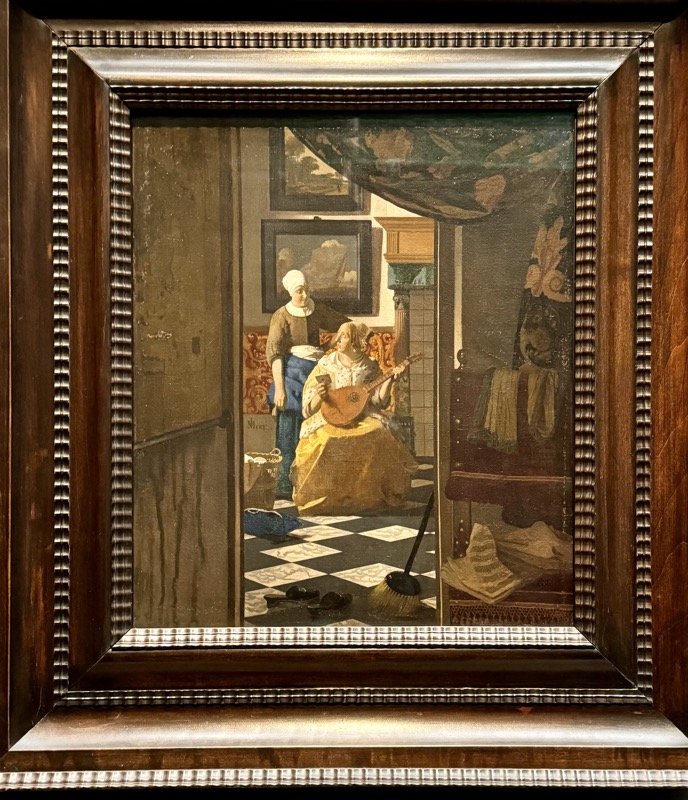
The Milkmail, Johannes Vermeer, c.1660
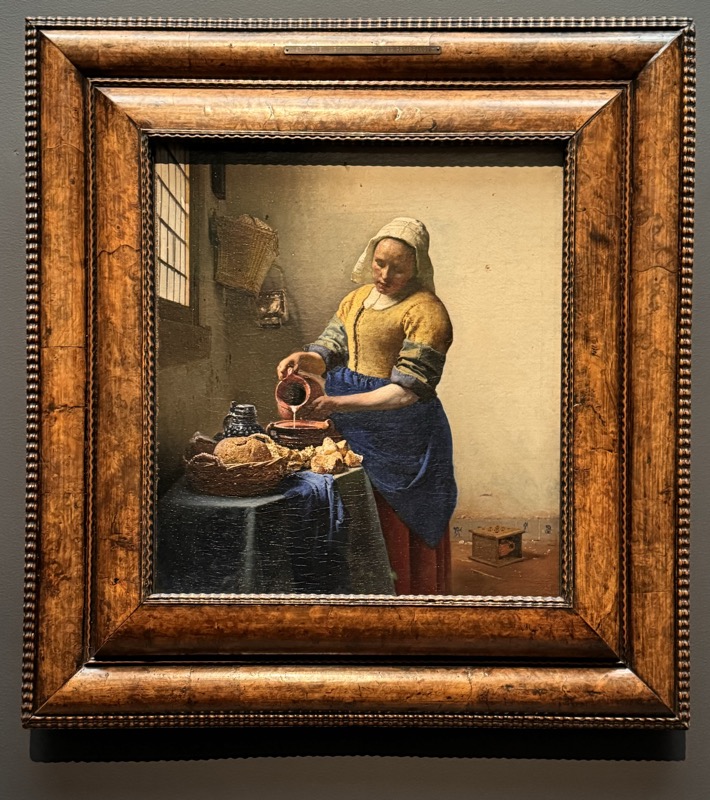
Self Portrait as the Apostle Paul, Rembrandt van Rijn, c. 1661.
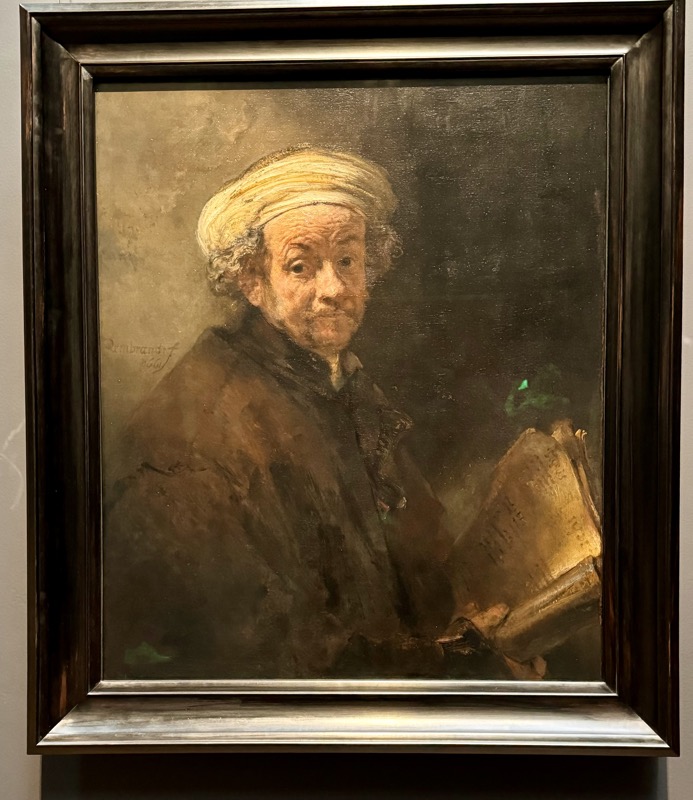
The Threatened Swan, Jan Asselijn, c.1640.
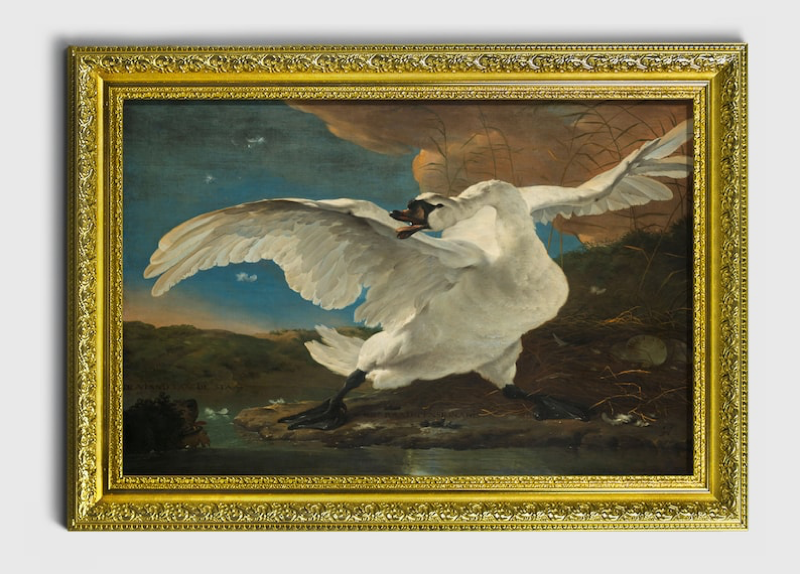
And of course, the Nightwatch, Rembrandt van Rijn, 1642. Which I never expected to see out of a frame on a stretched canvas like this. I expected the glass room built around it so no one could get within 9 feet of it, but no frame. I feel it loses something here from how it would have been presented in the artist’s lifetime.
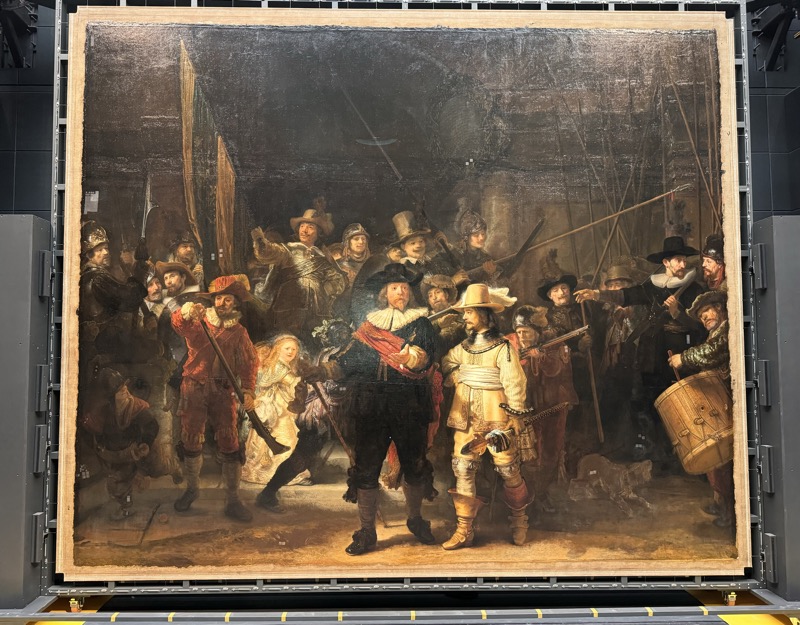
Long day is long, and museums with crowds of people are exhausting. Couple of pretty pics on the way back to our hotel. The tram system is efficient and clean, if a little confusing to start with.
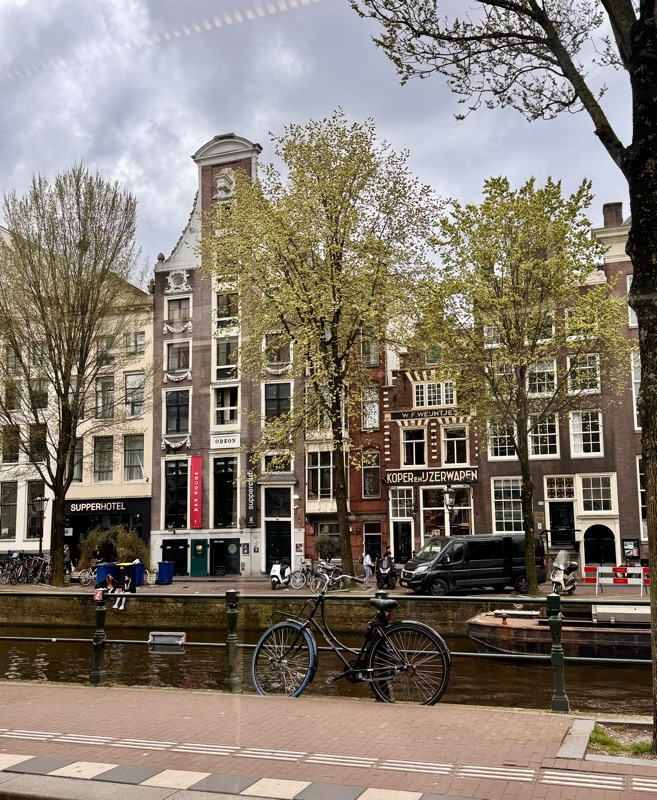
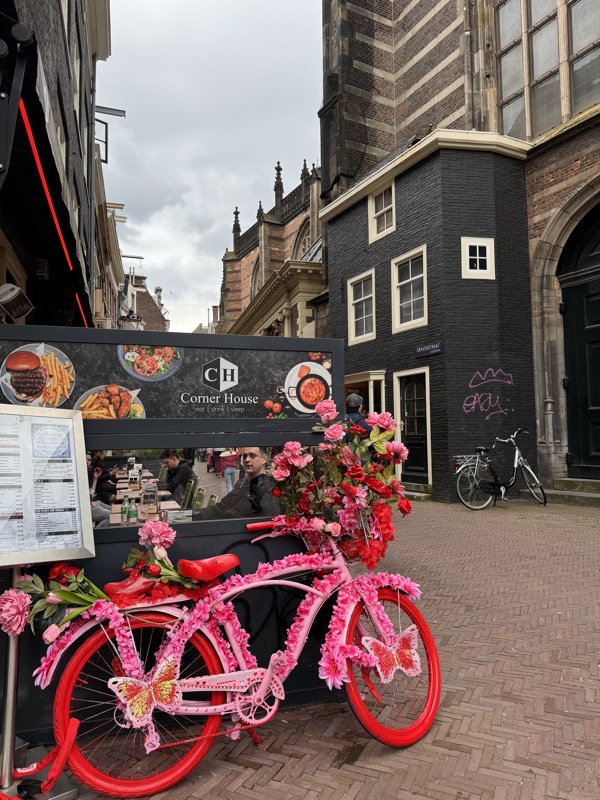
Popped into a souvenir shop looking for a lapel pin for my collection – and instead found more cannabis products than you could poke a stick at. Why would anyone buy their pot products from a souvenir shop when there are coffee shops selling all the gummies and brownies you could possibly want?
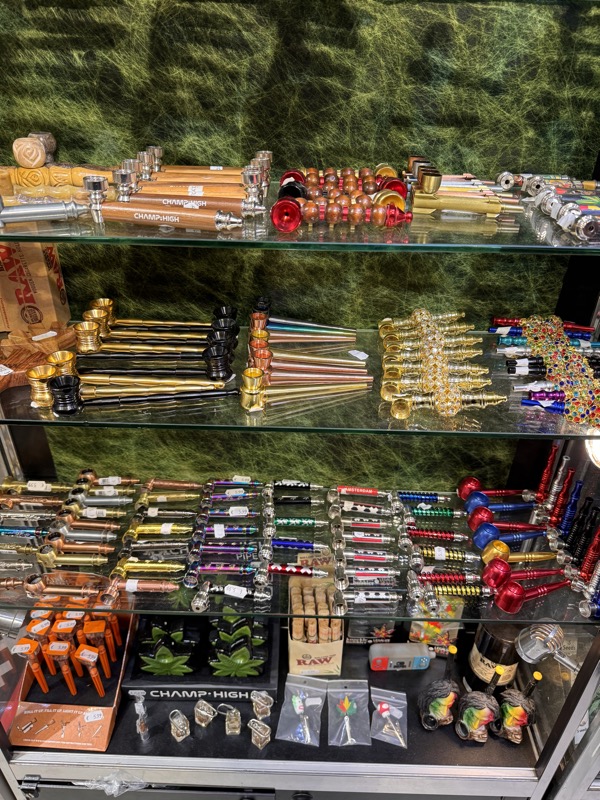
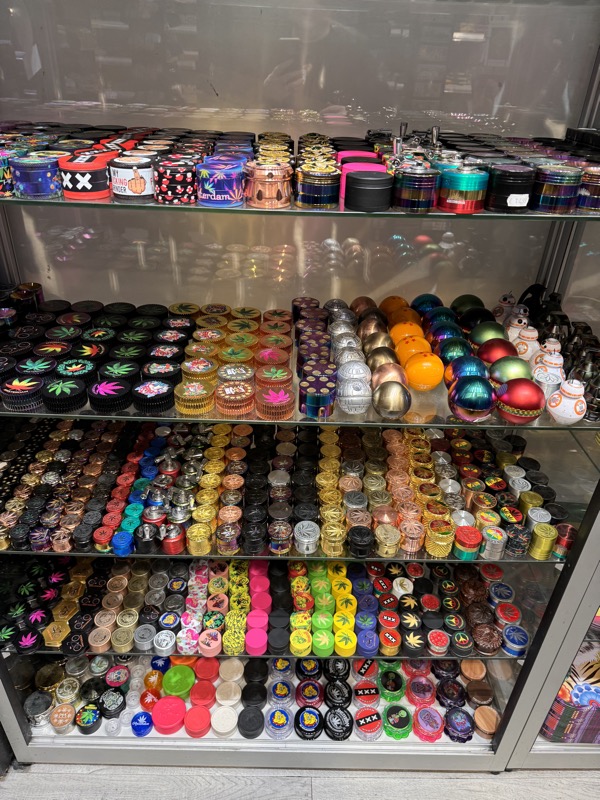
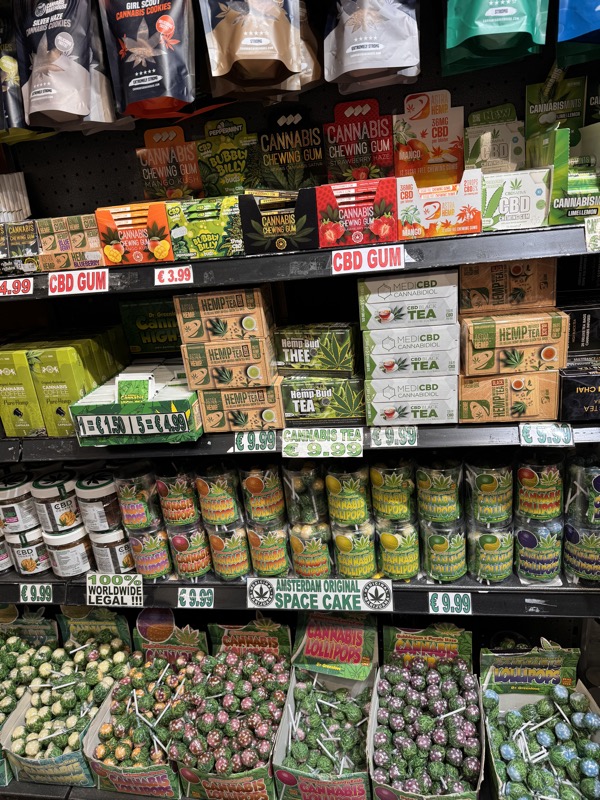
I am very tired, and I should have learned a few words of Dutch.
